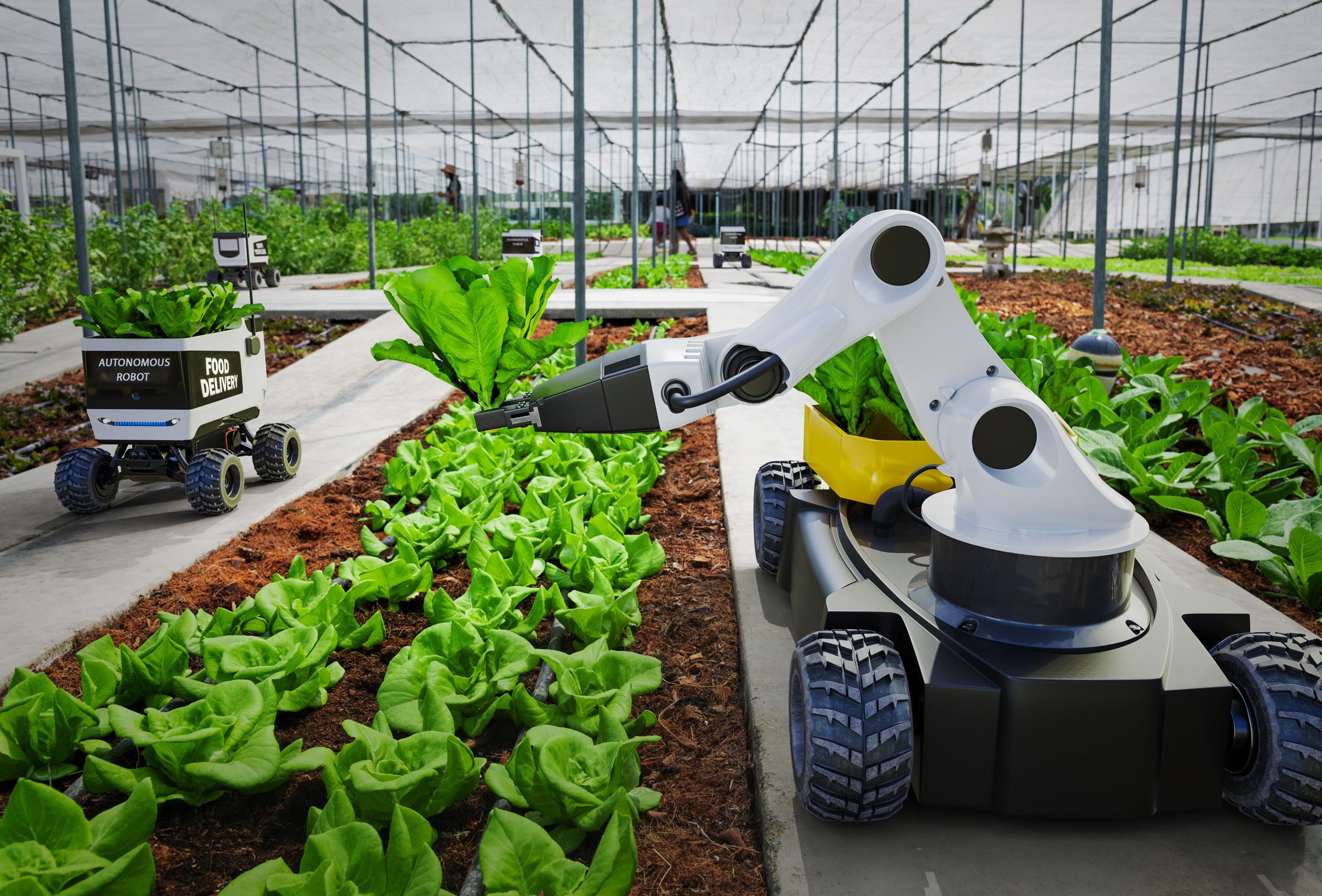














































• More Carcass Meat Yield
• Best Return on Your Investment
• Best Carcass Conformation and Meat Quality in the Industry
Visit www.aviagen.com/Ross to learn how Ross® 308 will deliver for you.

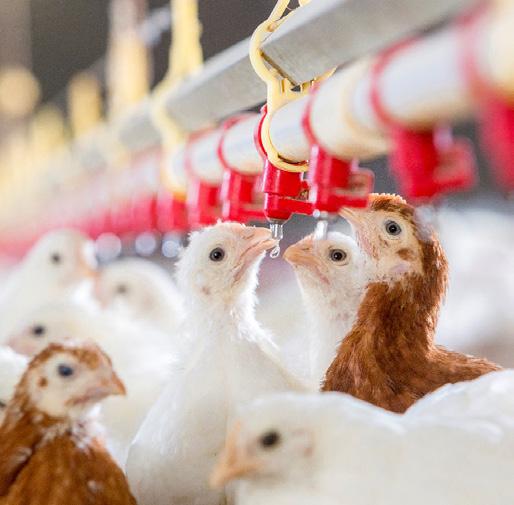





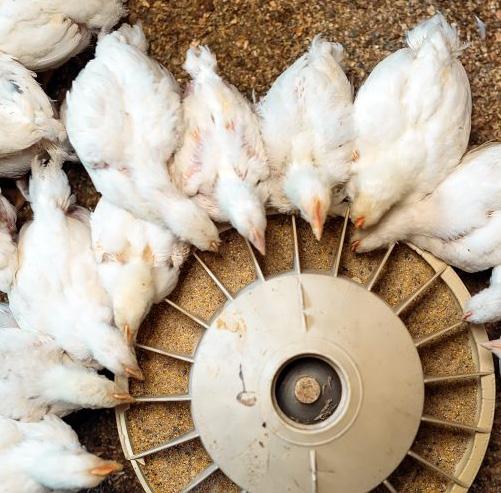
Cover Photo Courtesy: Sommet de l’Élevage, France

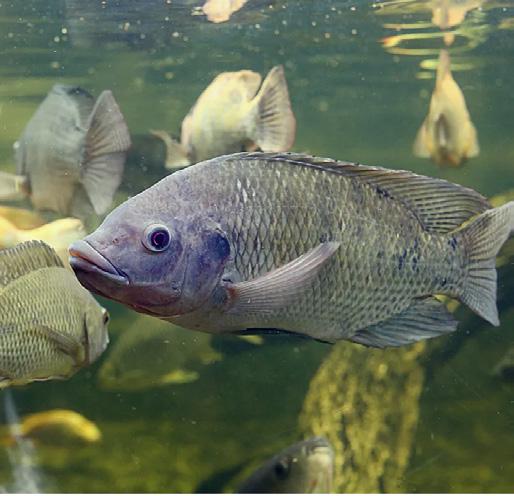
(USA) LLC. 1713 E. Morgan Court Gilbert, Arizona 85295
Assistant
Raseena
Loimee
Livestock & Poultry Middle East & Asia is designed to serve the fast growing livestock and poultry sectors in the Asia and Middle East region by providing the expert information to our readers in our four comprehensive issues in a year. It is circulated throughout Middle East region and worldwide in addition to the extra distribution at various Livestock, Poultry, Aquaculture and Agriculture Shows. The magazine provides editorial coverage on a wide range of topics which are of interest to industry professionals.




















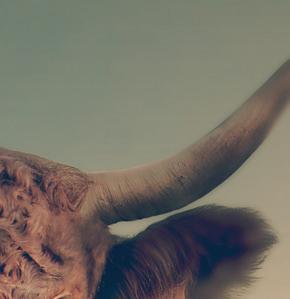


























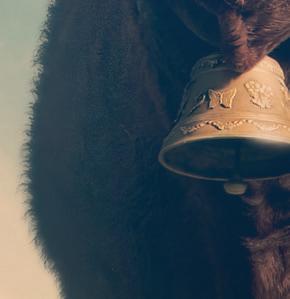


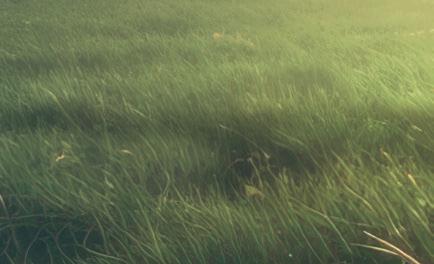


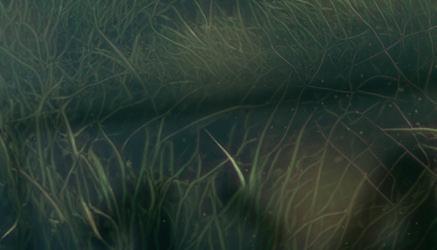

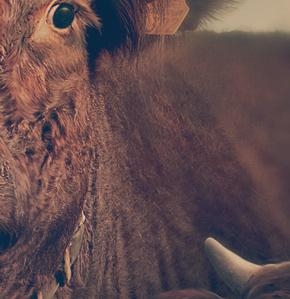



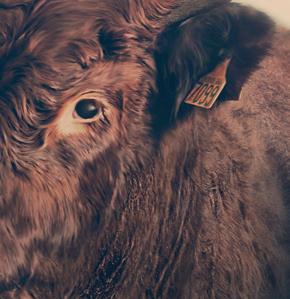
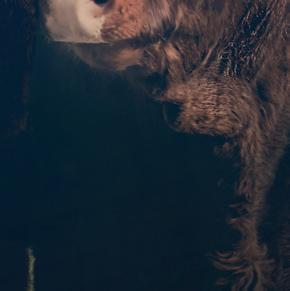




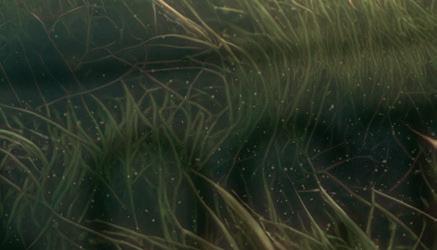




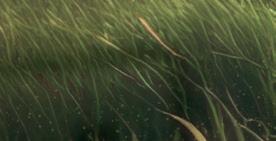


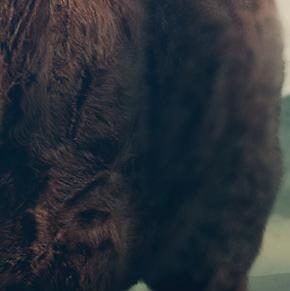
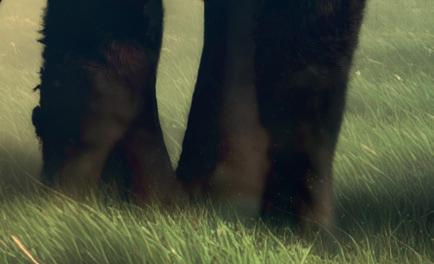













1,700 exhibitors • 115,000 visitors • 2,000 animals


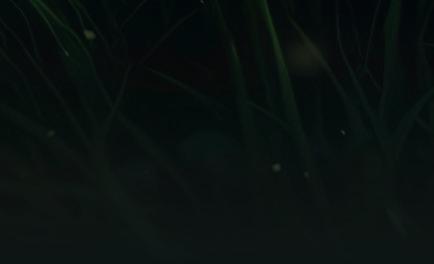






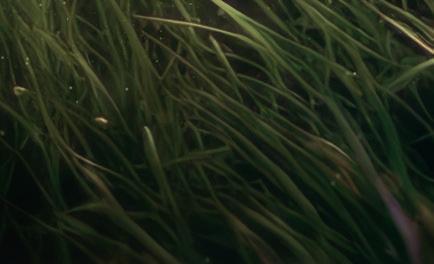









For the second year in a row, Almarai has been recognized as the fourth most valuable dairy company worldwide for 2024 by BrandFinance, the industry leader in brand valuation. This ranking followed a 16% yearly increase in the value of the Almarai brand, which reached $3.9 billion, as per Brand Finance’s 2024 annual Global Brand Report, which ranks Almarai as the highest growing among the top 5 ranked brands.
The market value of Almarai is estimated at over SAR 56 billion in the Saudi stock market. The company’s dairy sector is the largest. It began in 1977 as a dairy company before expanding into an integrated food company that included juices, baked goods, poultry, and infant food.
Commenting on this achievement, Mr. Abdullah Albader, CEO of Almarai, stated that this classification reflects the company’s commitment to
delivering high-quality and highnutritional-value food products, thus enhancing its global leadership in the food sector.
Almarai is the world’s largest vertically integrated dairy company and is today the largest food and beverage producer and distributor in the Middle East. Its high-quality food products reach more than 120 million consumers in the Kingdom, the Arabian Gulf, Egypt, and Jordan.
On 25 June, Aviagen® signed an agreement with Osool Poultry, our Ross Parent Stock (PS) customer in Oman, which enables them to be the exclusive Grandparent (GP) distributor of Ross PS throughout the country. Osool Poultry was established in 2016 with the aim of producing 150 million hatching eggs annually to meet the needs within Oman and
neighboring countries. Osool currently import day-old PS chicks from Aviagen to allow the company to sustain its annual broiler hatching egg production capacity.
This collaboration is of great importance to the local market as it addresses logistical challenges and costs, and also mitigates health risks associated with poultry imports. Local production will enhance poultry self-sufficiency in Oman, and safeguard against potential disease transmission.

Bulent Tanyildizi, Aviagen MENA Business Manager, signed
the agreement alongside Dr. Hadi Mohsen Al Lawati, CEO, Osool Poultry, and assisted in formulating a plan to integrate Aviagen’s customer support expertise. Aviagen will provide comprehensive support in setting up the project, which will focus on producing hatching eggs and high-quality chicks.
Dr. Hadi expressed the importance of this project for both Osool and Oman; “This collaboration with Aviagen is a significant milestone for the agricultural industry in Oman. With the help of Aviagen’s global expertise, we are strengthening our local production capacity, and also meeting the increasing demand for day-old chicks and hatching eggs within the local market.”
Seafood Souq, the global technology company whose integrated digital ecosystem allows the seafood industry to trace, trade and finance seafood products, announces a groundbreaking partnership with Newsan Food, the global seafood supplier. The partnership is a significant milestone in the seafood industry in the GCC region and beyond.
This exclusive alliance allows Seafood Souq to be the sole distributor of Newsan Food products in the GCC region. The commercial privilege - which has not been granted to any company before - cements Seafood Souq’s position as the premier destination for high-quality
seafood in the region.
Moreover, Newsan Food has pledged to prioritize Seafood Souq in expanding its reach into other international markets, opening doors to unparalleled growth opportunities for both companies.
Newsan Food is a global powerhouse in seafood production - with an impressive infrastructure of 40 fishing vessels, 16 state-of-the-art processing plants, and three expansive cold storage facilities. With a footprint spanning 70 countries, Newsan Food specializes in a diverse array of premium seafood products through their brands: Newsan Food, Tradarsa, Valastro, Nietos de Antonio Baldino, and Pesantar.
Their products include, but are not limited to: Argentinian shrimps, Hake, Patagonian Toothfish, Squid (multiple varieties), Chilean King Crab and Snow Crab, Chilean Swordfish, and Andean Salmon Trout.
Seafood Souq is deeply appreciative of all the various stakeholders that have come together to complete this partnership and set it up to flourish – especially Eurotrade Seafood – via its position within the Newsan group structure.
Newsan Food is also actively engaged in mussel farming, rainbow trout farming, and other sustainable aquaculture practices, showing its commitment to environmental responsibility and product excellence.





































































































































































































































































































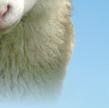

































The United Arab Emirates has been expanding its chicken meat production, with a projected 7% increase in volumes in 2024. However, local production still accounts for less than 15% of the total consumption in the seven Emirates comprising the country. Therefore, chicken imports into the market are also expected to increase this year, by 2.67%, says the United States Department of Agriculture (USDA).
According to the projections, poultry imports into the Emirates are set to

reach a new record in 2024, totaling 385 thousand tons. This is a market dominated by Brazil, whose share has increased by about 15% over the last 10 years. In 2024, Brazil is expected to account for 82.6% of the forecasted volume, meaning it will export close to 320 thousand tons of the product, says the USDA. The projection does not include exports of chicken feet/ paws, so official Brazilian numbers are usually higher than those indicated by the institution.
The USDA also notes that, while U.S.

exports to the Emirates have been increasing, the country continues to lose market share to Brazil. This is attributed to the type of packaging, product type, and consequently, price. The product exported by the U.S. is primarily represented by leg quarters packaged in bigger bags. Thus, they cater mainly to large consumers such as processing industries. On the other hand, the product exported by Brazil, which is more diversified, comes in smaller packaging, catering to multiple channels.
Baladna Q.P.S.C signs an agreement with the Algerian Ministry of Agriculture and Rural Development for the world’s largest integrated dairy farming and production project with a 3.5 billion USD investment. Herd to reach 270,000 with a production capacity of 1.7 billion liters of Milk yearly. Baladna Q.P.S.C. signed a Framework Agreement with the Algerian Ministry of Agriculture and Rural Development whereby Qatar will develop the world’s largest integrated project aimed at producing powdered milk in southern Algeria. The agreement that outlines a total investment of $3.5 billion was signed by Ms. Souad Assous, Director General of Agricultural Investment and Land at the Ministry of Agriculture and Rural Development, and Mr. Mohamad Moutaz Al-Khayyat, Chairman of Baladna. The signing ceremony was attended by HE Mr. Youcef Cherfa, Minister of Agriculture and Rural Development in Algeria; HE Mr. Laaziz Fayed Fayed, Minister of Finance in Algeria; and His Excellency Mr. Abdelaziz Ali Al-Nama, the Qatari Ambassador to Algeria, among other dignitaries.
Under the patronage of His Highness Sheikh Mansour bin
Zayed Al Nahyan, Vice President of the UAE, Deputy Prime Minister, Chairman of the Presidential Court and Chairman of the Board of Directors of the Abu Dhabi Agriculture and Food Safety Authority (ADAFSA), the third edition of Abu Dhabi Agriculture and Food Security Week (ADAFSW) will take place from November 26 to 28, 2024, at ADNEC Centre Abu Dhabi. The event will witness extensive international participation from policymakers and leading global companies specializing in the sector. Organised by ADNEC Group in collaboration with ADAFSA and the Food and Beverage Manufacturers Group (FBMG) as the Knowledge
Partner, ADAFSW will feature a series of specialised exhibitions and conferences, including the third edition of ADIFE 2024, the tenth edition of ADDPE 2024, and the inaugural World Food Security Summit. The summit is expected to attract a distinguished gathering of government officials, policymakers, leading experts, and specialists to discuss ways to advance the present and future of this vital sector. The week’s activities will also include a number of new accompanying events to showcase the latest global technologies in agriculture and food production.
His Excellency Saeed Al Bahri Salem Al Ameri, Director General of ADAFSA, affirmed that the current edition of ADAFSW embodies the
keenness of His Highness Sheikh Mansour bin Zayed Al Nahyan, Vice President of the UAE, Deputy Prime Minister, Chairman of the Presidential Court, and Chairman of the Board of Directors of ADAFSA to strengthen food security at both local and global levels and support sustainable economic development. During a press conference to announce the week’s events, His Excellency added: “ADAFSW 2024 embodies Abu Dhabi’s unwavering commitment to enhancing global food security. It will solidify the emirate’s position as a leading global centre for innovation in agriculture and food security, attract foreign investment to the sector, and open up new horizons for international trade.”
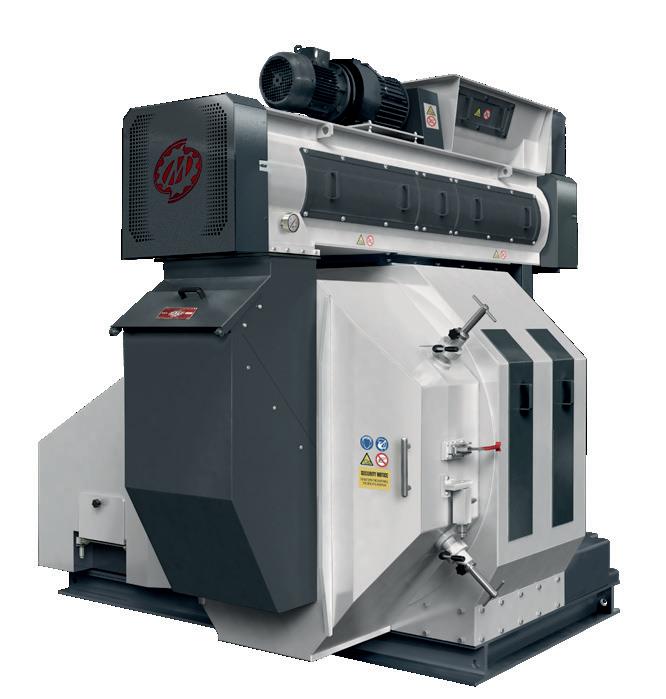
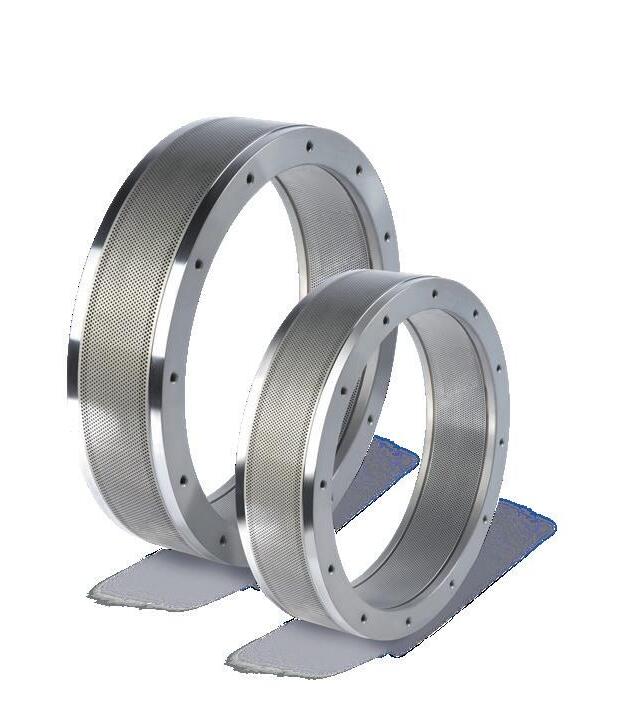



Jordan Capital and Investment Fund (JCIF) announced the signing of an investment agreement to acquire a minority stake in Sinokrot Poultry Farms (Sinokrot); one of the largest vertically integrated players in poultry farming and production in Jordan. The investment primarily aims to diversify Sinokrot’s operations by establishing a new feed additives manufacturing facility in Aqaba - in partnership with Jordan Phosphate Mines Company (JPMC) - while expanding existing operations.
Founded in 1962, Sinokrot
specializes in poultry farming and production, leveraging over 60 years of proven experience and an extensive client base. The company provides a wide range of poultry products such as table eggs, hatching eggs, day-old chicks, grains like corn and soybean, animal feed, as well as vaccines and purifiers. Sinokrot operates through 12 farms across Jordan, in addition to one hatchery, bulk grain silos and one poultry feed factory. Over the years, Sinokrot succeeded in building a strong market position and brand
name among local and export clients. Alongside expanding current operations and capacity, Sinokrot and JCIF are partnering with JPMC to develop an industrial facility for the manufacture of phosphatebased feed additives - namely monocalcium phosphate (MCP) and dicalcium phosphate (DCP) - in Aqaba. This pioneering joint venture empowers Sinokrot to diversify its product offering and access new markets and distribution networks, consequently supporting its long-term competitiveness.
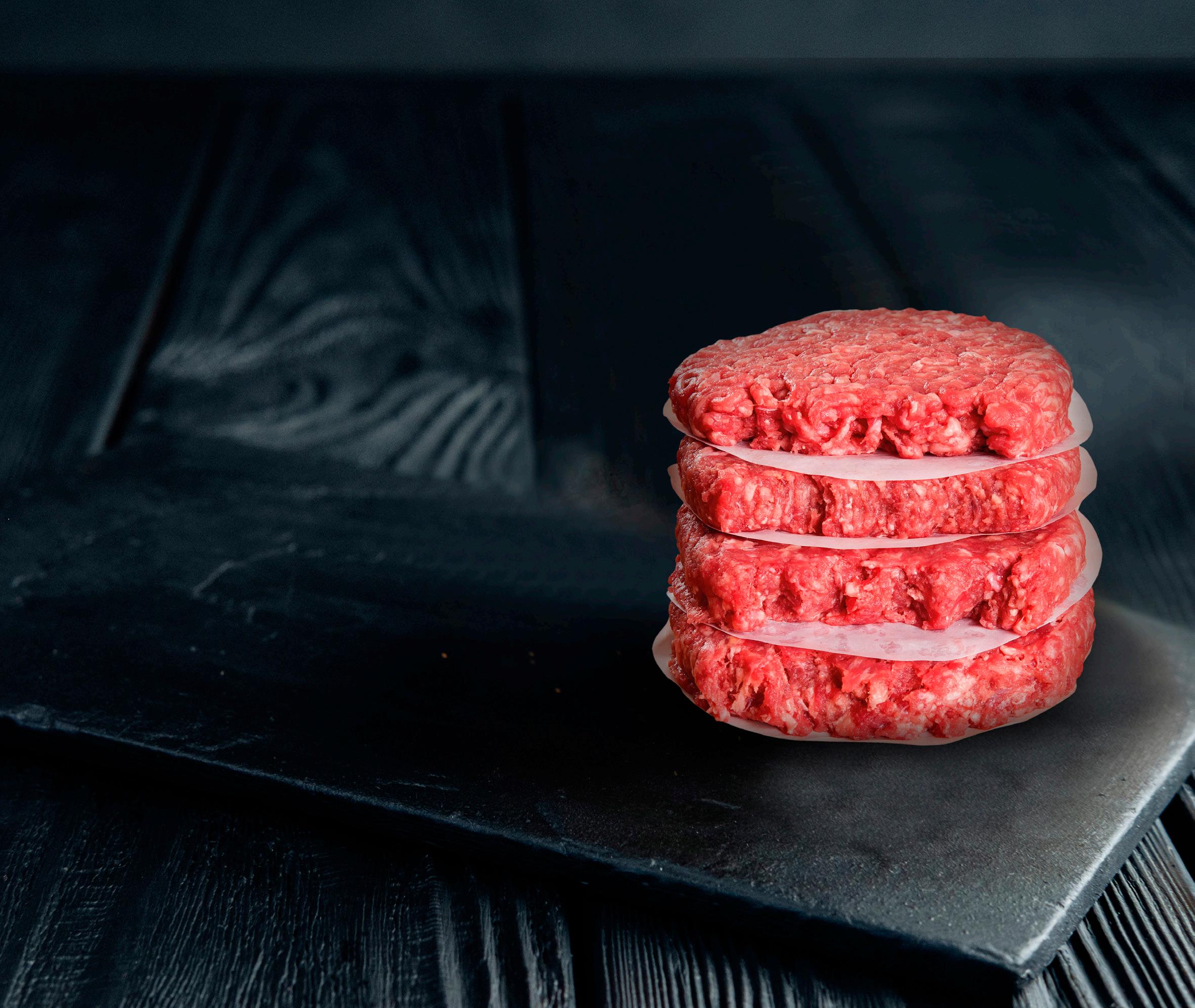
Animal Health Corporation (Nasdaq: PAHC) recently announced that they have entered into a definitive agreement where Phibro Animal Health will acquire Zoetis’ medicated feed additive (MFA) product portfolio, certain water soluble products and related assets for $350 million, subject to customary closing adjustments. This transaction is expected to be complete in the second half of
Both Zoetis and Phibro Animal Health have a longstanding commitment to the production animal health sector. The acquired product portfolio, which generated approximately $400 million in revenue in 2023, is comprised of more than 37 product lines that are sold in approximately 80 countries. Also included in the agreement are
U.S., one in Italy and one in China. More than 300 Zoetis colleagues who support manufacturing, distribution and commercial activities are expected to
Cargill, a global food and agriculture leader, has issued a $1 million grant to Colorado State University to help fund the university’s AgNext research program. The contribution will support cutting-edge research aimed at promoting sustainable animal agriculture practices and reducing the environmental impact of the beef industry.
“Working closely with industry partners like Cargill, researchers and producers, AgNext is
Al Ghurair Foods breaks ground on broiler farm in Abu Dhabi, part of AED1bln investment agreement with KEZAD.
Scheduled to be operational in 2025, the 68-hectare (680,000 sqm) facility will be built under a Musataha agreement across an overall area of 720 hectares (7.2 sqkm), allowing for future expansion. Equipped with advanced technologies, the facility will adhere to leading international biosecurity standards and strict food safety protocols. It will also provide employment opportunities for more than 200 people, whilst supporting local farmers through a production contracting model.
Meanwhile, the strategic location of the farm within KEZAD will enable Al Ghurair Foods to serve growing demand for poultry meat in the UAE, which has grown year-on-year in recent years. By establishing a local venture, Al Ghurair Foods will be able to bring high-quality, nutritious, and fresh products to closer to consumers.
helping develop innovative, scalable solutions that move the livestock industry toward a more sustainable future,” said Dr. Kim Stackhouse-Lawson, director of AgNext and Co-Pl. “An important part of that is developing robust baseline greenhouse gas emissions from cattle.”
Cargill’s $1 million grant will address a critical agricultural challenge: enteric methane emissions from feedlot cattle, which are naturally produced
during the digestive process.
Current USDA guidelines rely on assumptions about the effects of different feeding strategies on methane emissions, such as grain processing combined with other feed additives. However, empirical data supporting these assumptions is lacking. AgNext will bridge the gap by conducting several groundbreaking experiments at Colorado State University’s Climate Smart Research Facility over the next two years.
Scan to view our full range online


Visual and EID tags for cattle, sheep and goats kirsty.howieson@shearwell.co.uk











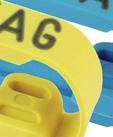


For more information, please get in touch
Much of the MENA region continues to face the severe impacts of climate change, including extreme temperatures, droughts, and water shortages. With more than half of the MENA comprising of arid and water-deficient regions, innovative and creative ways are crucial to help better use limited and untapped aquatic resources — as is already being done in Egypt, the largest aquaculture producer in Africa, according to USDA FAS.
WorldFish initiated an innovation

hub at its Abbassa research and training facility in Egypt in 2019 to mobilize cross-sectoral partnerships for developing cutting-edge innovations toward inclusive, climate-smart aquaculture, a mission shared by SEC MENA’s workforce and capacity-building programs.
SEC MENA has been an enthusiastic collaborator of WorldFish. Through its educational programs, SEC empowers farmers, producers, owners of fish farms,

• Gain Knowledge from Plenar y Sessions
• Build Contacts, Connect With Existing & New Customers & Collaborate For Business leads
• Join PMFAI's ICSCE 2025- one-stop Event for B2B Networking and knowledge-sharing
• Don't' Miss the Oppor tunity, Secure Your Spot Now, For Visibility & Better Booth Location
• Enhance Company Brand by sponsoring - Stand Distinguished
• 100 booth holders, 50 sponsors and + 800 delegates



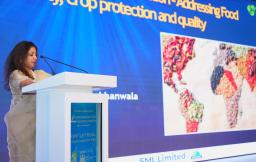


private hatcheries, and researchers. These programs are designed to elevate the aquaculture sector by integrating science, innovation, and sustainable practices. Egypt’s recent marine fish hatchery management program is a testament to this approach. By engaging participants from diverse backgrounds and regions, the SEC and WorldFish are laying the foundation for a more sustainable and resilient aquaculture industry in Egypt and the MENA region.

facility with state-of-the-art processing equipment to sustainable filling lines.

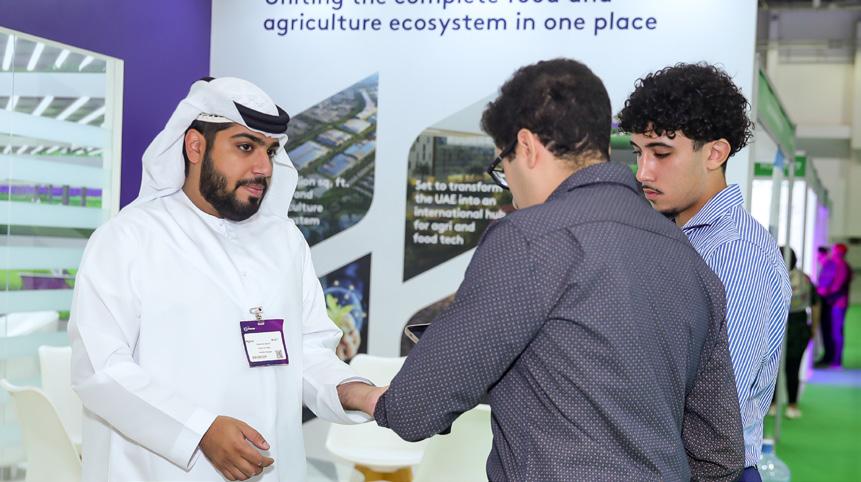

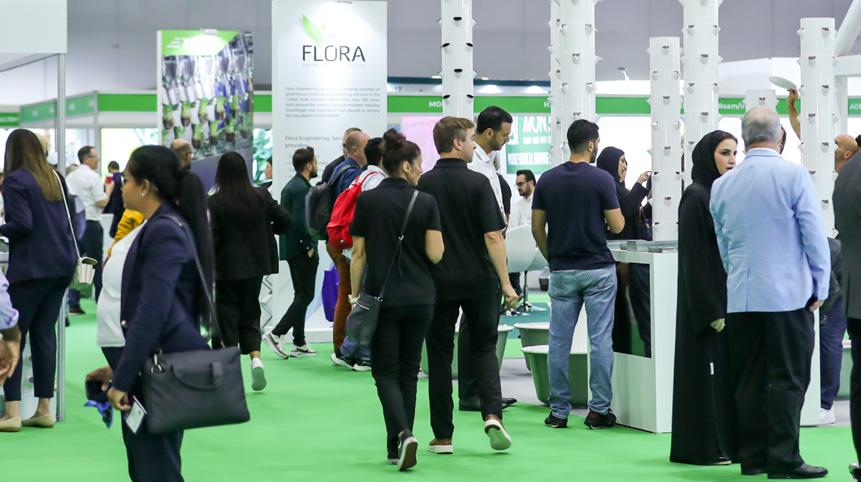
José Otávio B. Sorbara, Ph.D., is charting the direction of a growing product portfolio at NOVUS. Sorbara was named the intelligent nutrition company’s Feed Enzymes Global Leader following the company’s acquisition of BioResource International, Inc. (BRI), earlier this year.
In this new role, Sorbara owns developing the strategy and managing the innovation pipeline for NOVUS’s enzyme products while supporting the commercial team as it works to grow the feed enzyme business around the world.
“Enzymes are more important than ever for the animal agriculture industry,” Sorbara says. “They play a crucial role in optimizing
feed formulations, making them more cost-effective for feed millers and farmers. By enhancing the digestibility of nutrients in the feed, our enzymes improve the overall nutritional value of the diet for animals. This not only boosts animal performance but also reduces waste and environmental impact by minimizing nutrient excretion.”
He says coupling BRI’s products and expertise in fermentation with NOVUS’s own CIBENZA® Enzyme Feed Additive not only provides more options to customers it also allows the company to innovate solutions for tomorrow’s nutrition and performance challenges.
Laura Munoz, senior director
of Global Strategic Marketing & Business Development says Sorbara’s expertise with enzymes as well as in managing and fostering collaboration of global and regional teams will be an asset to grow the company’s market share in the enzyme sector.
“As an expert, José helped expand market opportunities for various enzymes while with DSM. His understanding of the sector is definitely an asset as we work to grow our enzyme portfolio,” Munoz says. “We’re confident that José’s leadership will allow us to meet our goals as well as continue to solidify our commitment as a trusted partner for our customers,” Munoz says.

With industry-wide challenges putting avian biosecurity in the spotlight, Australian Eggs is set to streamline biosecurity practices, with the launch of its brand new, state-of-the-art Virtual Reality (VR) training tool.
Responding to producer feedback that traditional biosecurity training methods were often time-consuming and ineffective, industry body, Australian Eggs has developed an interactive VR tool that visually
identifies key areas on the farm that pose biosecurity risks and assesses understanding of key concepts via a multiple-choice and interactive questionnaire. Designed for new employees, contractors, farm visitors, and existing staff, the new tool ensures comprehensive biosecurity knowledge across all personnel and provides users with a widely recognised accreditation that can be used across the industry.
The tool comes as Australian Eggs reveals its findings from its latest community sentiment research - a barometer that in 2024 surveyed 5,000 Australians. With the research finding strengthened trust in Australian Eggs, via the following insights:
· Trust in the Industry: 69% of
respondents trust the egg industry to act in the best interest of society.
· Career Advancement: 73% of respondents believe that new technology creates better career paths within the industry.
· Enhanced Welfare and Sustainability: 78% agree that technology improves welfare, sustainability, and environmental outcomes.
· Operational Improvements: 79% acknowledge that advancements in technology have significantly improved the way the industry operates.
· Importance of Traceability: 87% highlight traceability as crucial for food safety, reflecting strong confidence in current food safety standards, with only 13% prioritising confidence in food safety as the most important factor.

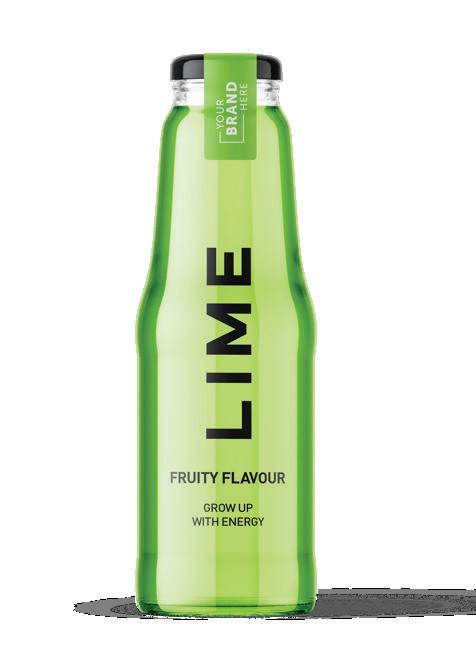







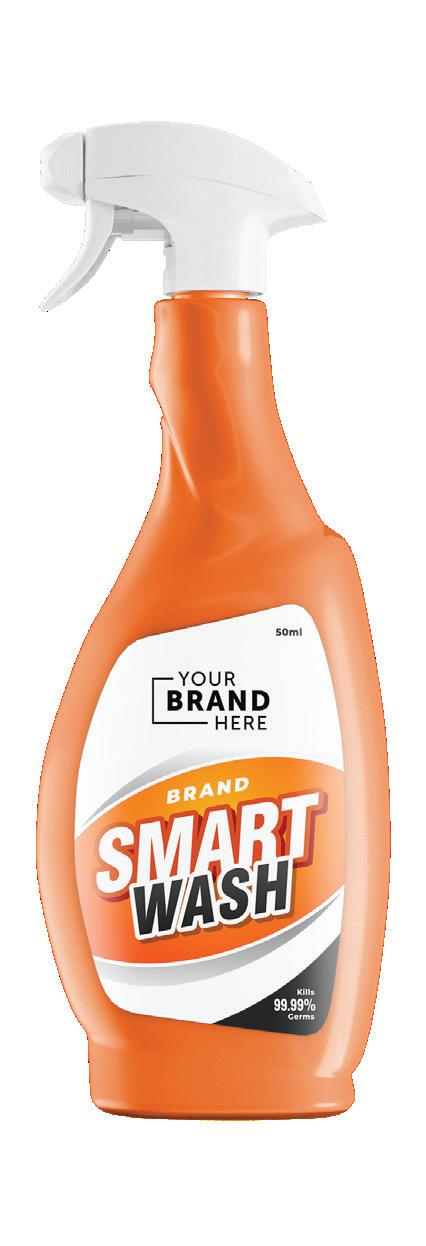






The expansion of Evonik’s MetAMINO ® (DL-methionine) production facilities in Singapore has been completed. The MetAMINO ® production on Jurong Island is again running at full capacity, after shutdowns in Q4/2023 and Q2/2024. The production capacity has been increased by
tons per year. The expansion was accomplished ahead of schedule.
Through process intensification, Evonik has optimized its methionine production plants, generating a surplus of steam that is used to produce on-site electricity.
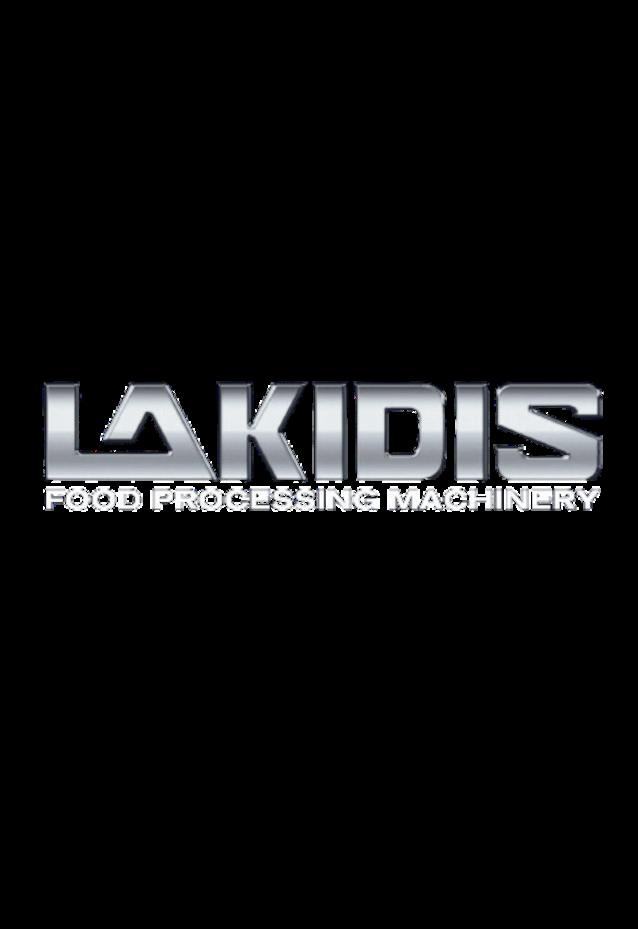
Linde, one of Evonik’s
operating a nine-megawatt alkaline electrolyzer plant, which is the largest of its kind ever installed in Singapore. The unit enables Evonik’s efforts to use green hydrogen required for the MetAMINO ® production and reflects the company’s commitment to sustainability and reducing its environmental
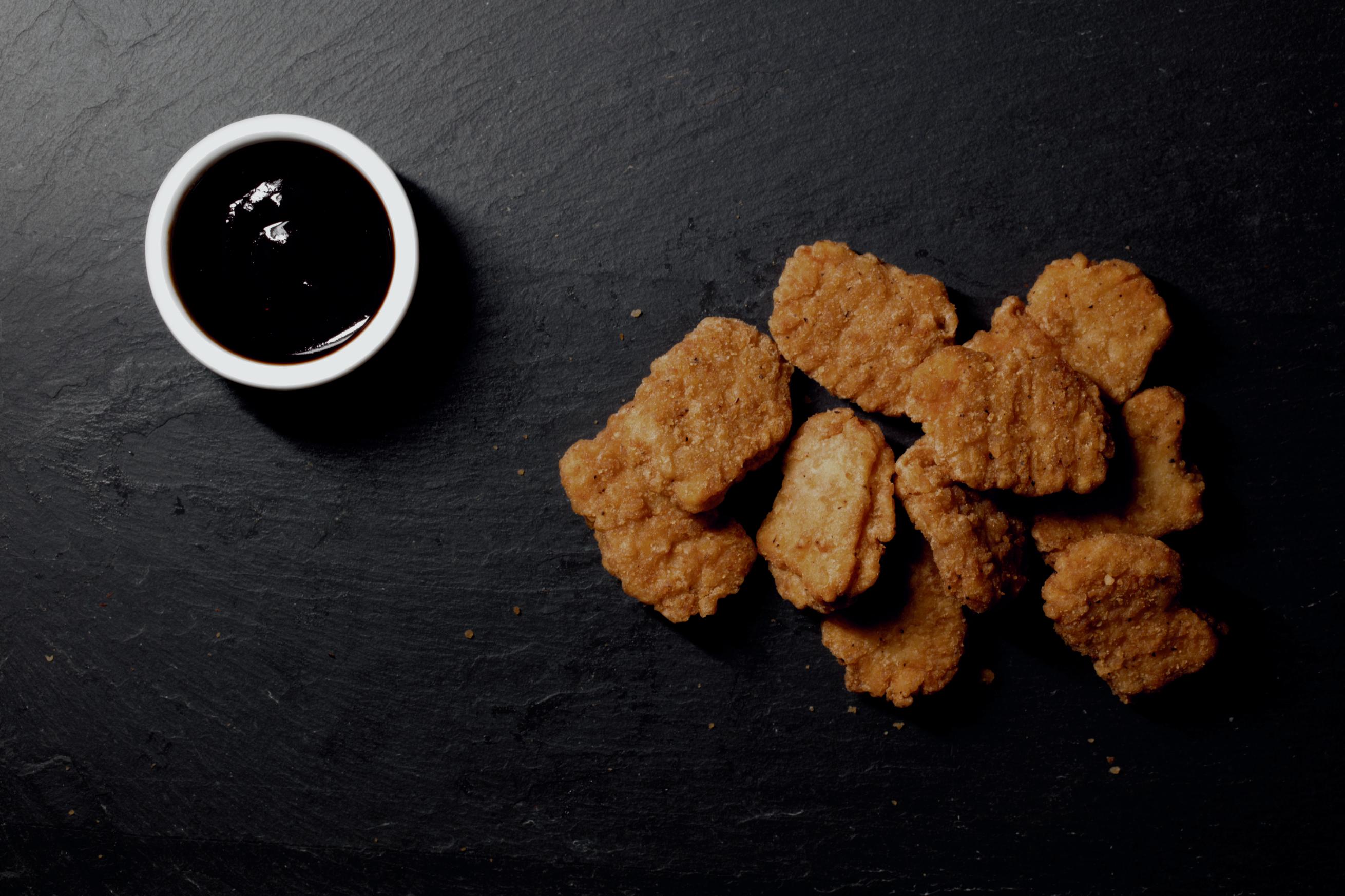
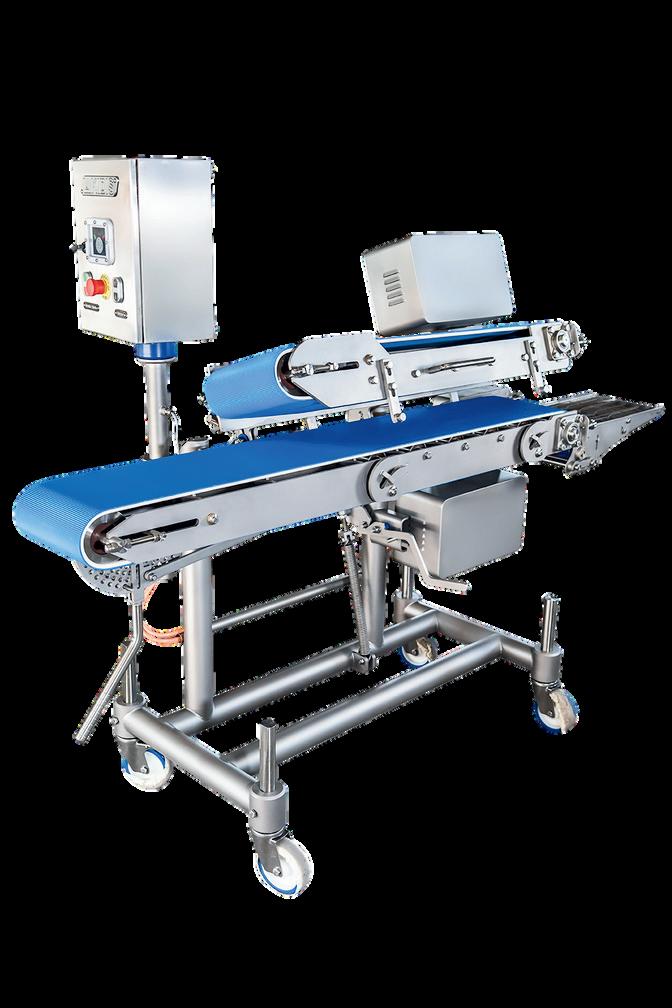




24-26 SEPT 2024
DUBAI WORLD TRADE CENTRE


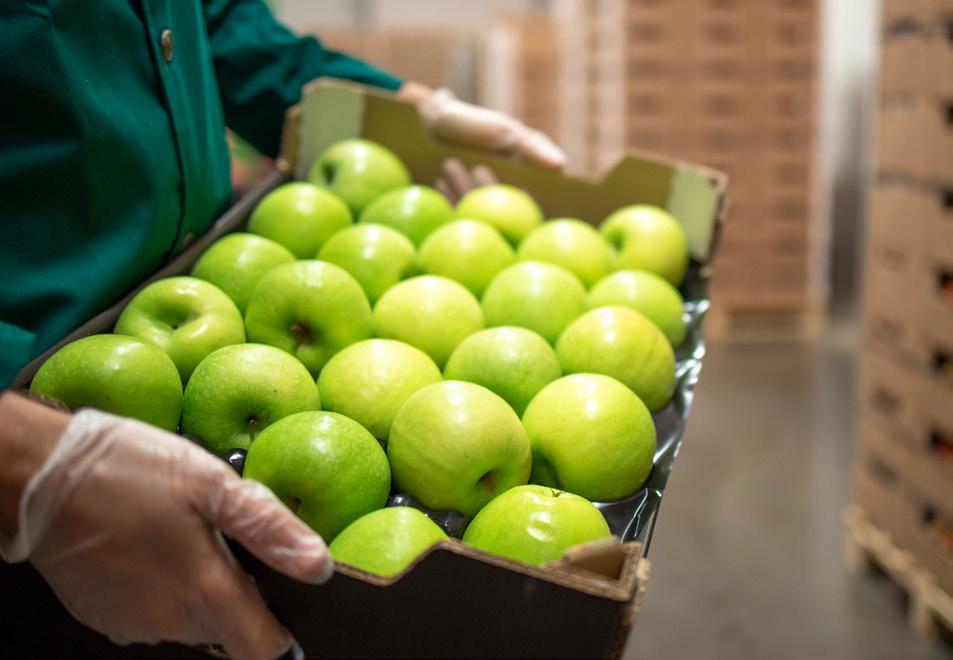

Gulfood Green will provide an indispensable global platform for the entire food ecosystem to exchange on technology, regulations, practices, solutions and changes in consumer food culture.
The overarching goal is to achieve sustainability in all its dimensions: from farmers, to supply chains, food production, mindful consumption and Fourth Industrial Revolution technologies such as artificial intelligence, blockchain and smart agriculture.
The Eastern Africa Grain Council (EAGC), in collaboration with TradeMark Africa (TMA), has unveiled a three-year pioneering project dubbed ‘Strengthening Competitiveness in Export-Oriented Staple Food Value Chains in East Africa.’ This initiative is funded by the USAID-Economic Recovery and Reform Activity (USAIDERRA) through TMA and seeks to boost regional grain trade across critical trade corridors in Uganda, Tanzania, and Kenya.
This project is particularly significant given the volatility and gradual decline that has characterized the region’s trade in food commodities. Numerous challenges, such as minimal
aggregation, informal trading, and limited integration of farmers into formal trade, contribute to substantial transactional costs. Furthermore, the absence of adequate storage and quality management infrastructure, a deficiency in post-harvest handling expertise, and a scarcity of information about export markets serve to aggravate these issues.
To address these challenges, the project intends to fortify farmer-led Grain Business Hubs (G-Hubs), utilize technology to elevate grain production, quality, and trade, and enhance enterprise-level capabilities along with institutional frameworks to improve adherence to Sanitary and Phytosanitary (SPS) standards,
thereby bolstering export-driven grain trade. Moreover, the initiative will develop and enhance an information hub to guide regional food balance sheets and influence national and regional food security and trade policies, ultimately cultivating an enabling regulatory framework for trade.
During his keynote address, Mark Priestley, Chief of Party, USAIDERRA, underscored the strategic collaboration – between EAGC and TMA, which is set to enhance grain exports across the region through innovative approaches like the farmer-operated Grain Business Hubs (G-Hubs), harnessing technology to advance grain quality and stimulate trade.
The share of livestock production value in Germany’s total agricultural output is significant. However, political framework conditions, national requirements, high animal welfare standards and other factors continue to affect the competitiveness and future viability of cattle, including dairy, pig and poultry farms, generating a number of challenges. True to the theme “We innovate animal farming”, visitors to EuroTier 2024 will be able to discover a range of suitable solutions to these current challenges. The world’s leading trade fair for professional animal husbandry and livestock management will take place in Hanover, Germany, from November 12 to 15, 2024.
Animal husbandry in Germany is an essential component of sustainable and future-oriented food production albeit challenging times for livestock farmers. Between the
conflicting priorities of political and social demands, farmers must manage the balancing act between animal welfare, market conditions and profitability in order to ensure long-term competitiveness.

At EuroTier 2024, professional farming visitors will be offered a wide range of presentations on the topic of “Competitiveness”, drawing on the exhibition theme “We innovate animal farming”. The DLG Spotlight “AI in poultry farming” will highlight the possibilities arising from new developments in automation and digitalization and illustrate the latest advances with examples of application. Practical solutions for management and technology on livestock farms and in upstream
areas will serve as inspiration for further improvement for both livestock and farmer.
The topic “Direct farm sales and on-farm slaughter” at EuroTier 2024 will focus on mobile slaughtering and highlight its central role in the direct farm sales of agricultural products. The development of a successful strategy allows farmers to market products directly from the farm, which strengthens the relationship between producers and consumers and can offer economic benefits.
Specially designed to support the resilience of shrimp facing challenging conditions and provide optimal nutrition to safeguard farm performance, this new, prime functional feed has debuted in India.
Shrimp farming is one of the great success stories of global aquaculture. Through its rapid growth in recent decades, the sector has taken a lead role in contributing to world food security. However, the dependency and constant interaction that shrimp have with their environment means that they are persistently exposed to naturally occurring challenges that have a negative impact in the shrimp and can potentially impact production. Recognising the scale of the threat posed by these challenges,
Skretting has launched the brand new feed, Armis. Historically, producers hit by challenges such as Enterocytozoon hepatopenai (EHP) and other parasites have had little option but to feed their afflicted, slow-growing stocks increased volumes of feed. This in turn results in significantly increased costs and diminished profitability. Now, farmers can turn to Armis, a practical solution that supports the shrimp’s resilience and continued growth under challenging conditions. Armis has been carefully developed over the past three years, built upon Skretting’s

extensive knowledge of the specific nutritional requirements and digestive capabilities for shrimp species. It will also contain the latest phytogenic technology. Armis has first been made available to India. Field trials that were recently conducted in this country have demonstrated the diet’s efficacy in restoring and maintaining growth in challenged shrimp.
Bühler, in collaboration with Flour Mills of Nigeria Plc, has opened a grains application center in Nigeria dedicated to processing local and ancient grains. This sustainable and transformative commitment was made based on the need to address food insecurity, not just in Nigeria, but progressively across the African continent. Today around 2.3 billion people in the world live in food insecure conditions, according to the Food and Agriculture Organization (FAO) of the United Nations. With their specific advantages, local grains such as sorghum and millet can play a vital role in improving food security, particularly in Africa. Use of these raw materials is at a low level today,
and processing is not developed. To address this challenge, Bühler is opening a dedicated Application & Training Center with research and development capabilities in Kano, Nigeria, together with its founding partner, Flour Mills of Nigeria (FMN), and its collaborating partners, such as Olam Agri.
The main goal is to bring industrial processing of these grains to the next level and thereby contribute to affordable nutrition. “Sustainable food value chains utilizing local grains are the number one priority to develop Africa,” says Johannes Wick, CEO of Bühler’s Grains & Food segment.
“In addition to improving the food value chain, we see great business opportunities with a
new category of processed food,” says John Coumantaros, Chairman of the Board of Flour Mills of Nigeria. Commenting on the foreseeable impact of the Application & Training Center, Coumantaros stated: “FMN has always been at the forefront of driving food self-sufficiency in Nigeria and progressively across the continent. The application center is well positioned to sustainably develop local grains, create business opportunities, and provide viable alternatives to some imported raw materials used in production. Therefore, this partnership further demonstrates our consistency in developing local content and in our commitment to feeding and enriching lives, every day.”
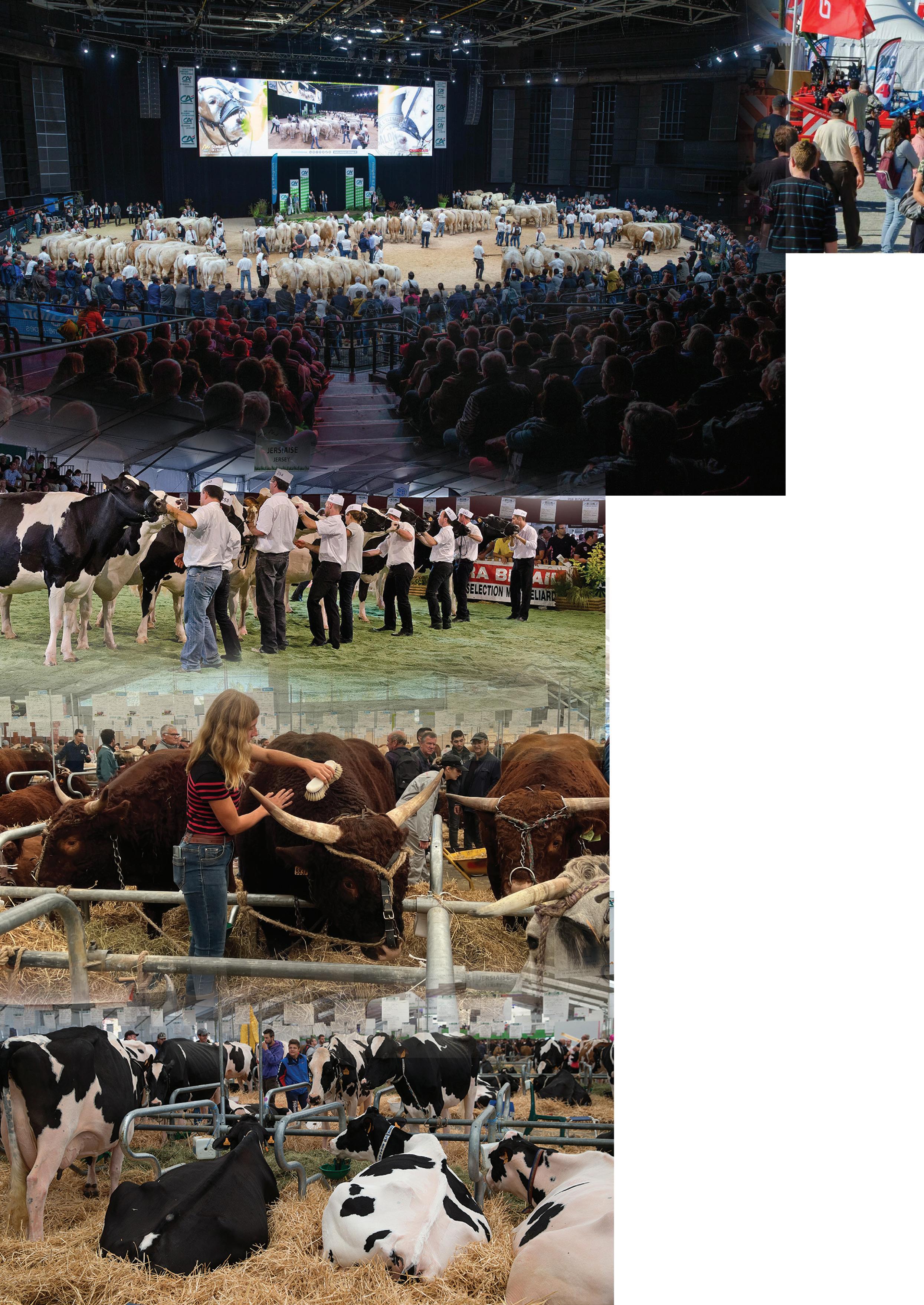
The 33rd edition of the SOMMET DE L’ELEVAGE (LIVESTOCK SUMMIT) will take place in Clermont-Ferrand, France on October 1-4. An event not to be missed!
A recognised international business forum, the SOMMET is not only THE event for the livestock industry, but it’s also THE place to be for politicians, institutions, farmer organisations and unions, influencers and many others who flock to the show every year.
2,000 head of livestock, 1,700 exhibitors and 120,000 visitors are expected at this year’s event, which already includes a stellar programme with, among others, the Salers breed organising its national championships and the mixed Simmental breed that is hosting a European competition with cows coming from 4 different countries.
In addition, the SOMMET DE L’ELEVAGE will be hosting over 140 conferences covering all the key agricultural issues.
Not forgetting of course, the renowned “Sommets d’Or” innovation competition, Kazakhstan being the country guest of honour and the central theme at this year’s SOMMET of sustainability in livestock production.
Sustainability in livestock production is the theme of this year’s show and it’s the new strapline at the SOMMET.
For over a year now, the SOMMET DE L’ELEVAGE has given itself the goal of becoming the world’s #1 sustainable livestock show.
“At a time when everyone is talking about sustainability, everybody is still trying to define the concept”, as explains the SOMMET’s General JULY-SEPTEMBER 2024

Manager, Fabrice Berthon.
“It was important for us to make it our hobbyhorse because our event began and has developed in the heart of our Massif Central region, an unspoilt area, 70% of which is natural pasture. And it is in this ecosystem that a sustainable livestock model based on pastoralism has been naturally developed by farmers over the years.
“This is what our event is all about, making the sustainable dimension our major ambition for the future and the agriculture of tomorrow by promoting all the prospects in the conservation of the Ecosystem and Man within this environment,” adds Fabrice Berthon.
Year after year, numerous foreign delegations, with identified investment plans, make the journey to the centre of France to attend this major livestock event. Their interests range from cattle genetics (beef and dairy breeds), sheep, livestock machinery and equipment, to inputs, animal feed, milking and milk handling equipment and new technologies.
Over 5,000 international visitors are expected – last year saw a resurgence in international visitors with delegates coming from more than 90 countries.
The SOMMET’s organisers have, as every year, identified as a priority, an appropriate and warm welcome for foreign delegations. This includes free entry to the show and VIP facilities, as seen in the International Lounge which
serves as a reception, work and relaxation place. It offers many free services such as interpreters, guided tours of the show, organisation of B2B meetings with exhibitors, free shuttles to the city, train station and the airport, etc.
A programme of 30 farm and agri-industrial site visits is also available to foreign delegations every year, including beef and dairy farm visits, sheep, horse and goat unit visits. There’s also a visit to an abattoir, a biogas unit, a beef export centre, a feed lot, a beef meat research centre and a visit to INRA, the National Institute of Agronomic Research to learn about what’s on the farming horizon.
Delegations are also invited to the International Livestock Gala Evening during which all breeds of cattle, sheep and horses present at the show will be on parade in the main Zenith d’Auvergne ring, followed by a convivial buffet party.
For the 4th time, the Salers breed will use the event to host its annual National Championships. Divided into 4 half-days, the “National” is an eagerly awaited event for both French and international Salers breeders. It is the world's largest gathering of the breed, bringing together all Salers fans and with close on 140 farms, from throughout France, represented at the show. For 4 days, 400 animals, among the best of French Salers genetics will be in judging in the prestigious Zenith d’Auvergne ring. An auction sale
of elite breeding stock will round off activities on Friday 4th October 2024.
Once again, the number of exhibitors whose business activity is in the domain of energy transfer (biogas, solar power, etc.) is increasing, confirming the interest of the SOMMET for these new technologies and the sustainability of these energies.
More information and registration for free entry tickets and farm tours on www.sommet-elevage.fr

Over 6,000 decision-makers from more than 180 countries will attend AgraME 2024, which will be held from October 7-8, 2024, at the Dubai World Trade Centre in Dubai, UAE. The event will feature over 150 exhibitors showcasing innovations in horticulture, vertical farming, aquaculture, veterinary products, and sustainable agriculture.
As the UAE pioneers innovationdriven food security under the Green Agenda 2030, AgraME sits at the heart of the region's agricultural advancement. Aligning with the National Food Security Strategy, AgraME acts as the catalyst for technological initiatives, sustainable agribusiness, and global collaborations. Join us in Dubai, where the world of agriculture comes alive, and together, let’s sow the seeds of a sustainable and secure future for the Middle East.
AgraME is Co-located with AgroFarm Middle East, the only trade fair in the UAE specialized 100% in animal farming. AgroFarm Middle East covers the whole portfolio for
all locally relevant animal species. The show offers a comprehensive technical program consisting of presentations and workshops and the biggest indoor animal show for cattle and with a larger focus on sheep and goats.
With a focus on regenerative practices, this innovative conference will provide a platform to examine the latest developments, challenges, and opportunities in promoting soil health, water conservation, and ecosystem resilience.
AquaME stands as the region’s foremost event for aquaculture

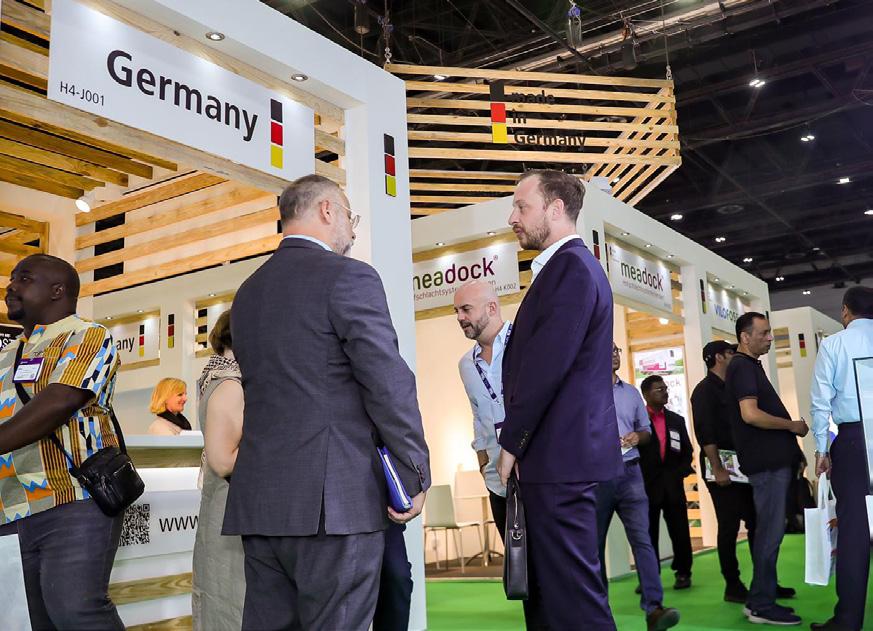
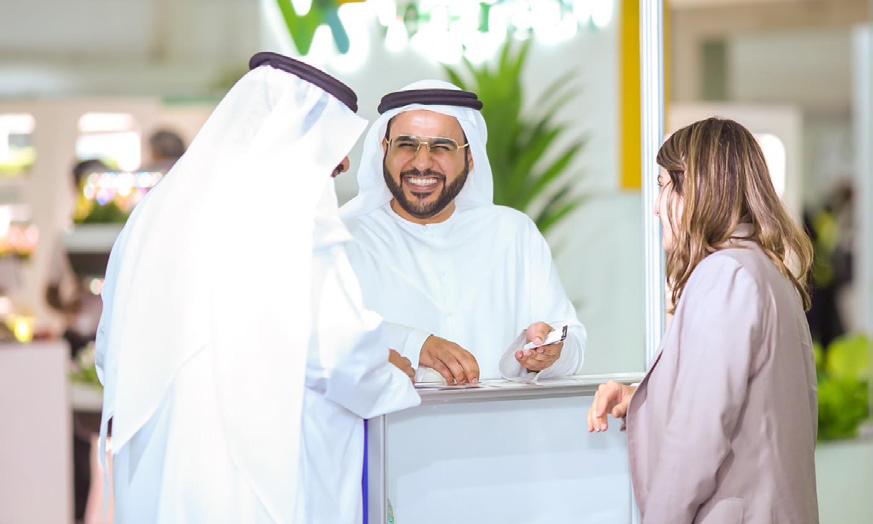
professionals. Over the last decade, aquaculture has evolved significantly, transitioning from onshore to offshore operations and embracing new innovations in feed and farm equipment.
As an essential segment of AgraME, VetME promotes agricultural excellence by addressing the critical need for advanced veterinary services by ensuring livestock welfare, and reinforcing a resilient and secure food supply chain.
HortiME is the region's premier event for vertical farming and greenhouses, focussing on the products and technologies within the horticulture and controlled environment sector, aligning with government and regional goals for food security.


The 41st edition of the Saudi Agriculture international exhibition for Poultry, Livestock, Dairy, Agriculture, Food, Aquaculture, Packaging, Agro-industry, Honey and Dates is the largest B2B event for the agriculture sector in the Middle East region. The exhibition is to be held from 21 – 24 October 2024 at the Riyadh International Convention & Exhibition Centre in Riyadh, Saudi Arabia. Saudi Agriculture 2024 will be welcoming over 27,000 visitors and showcasing leading technologies, products and solutions, cutting-edge engineering and agricultural innovations.
Products, technology and services from over 400 international and local exhibitors will be on show. The exhibition incorporates three specialist shows under its umbrella. The 29th international trade show for Agro Food & Organic Food, Ingredients, & Technologies, the 12th edition of Saudi Food Pack and the 6th edition of Saudi Aquaculture.
Saudi Agriculture is the largest Agriculture B2B event serving the region, meeting the needs of the high-growth agricultural sector. Held under the patronage of the Saudi Arabian Ministry of Environment, Water and Agriculture, the exhibitions’ long history demonstrates its unprecedented, sustained success. International and local buyers can source their needs under one roof. The trade show will bring businessmen, industry professionals, decisionmakers and sellers together to develop their businesses at the centre of the largest market in the Middle East. The exhibition offers an ideal platform for widespread collaboration between farm owners, local and international business leaders actively participating to develop and grow the sector. With the rapid advancement of agro-tech to provide better yields, sustainable farming practices and ensure Saudi food security, the latest advancements in agricultural technologies and solutions will be on show at Saudi Agriculture 2024. Drones, IoT applications,

AI solutions, robotics, vertical farming, and other technologies that enhance planning and control for smart farming will be a major focus to continue the transformation of Saudi Arabia’s agricultural sector.
To support the Ministry of Environment, Water and Agriculture’s transformation strategies, the trade show organiser, Riyadh Exhibitions Company is repeating the successful Saudi International Agricultural Forum. The co-located conference will offer a series of educational keynotes, panel discussions and workshops that put agricultural technology and food security at the centre of the program. The 41st edition of Saudi Agriculture, the largest and longest running multi-faceted agricultural trade show in the Middle East promises to be a greater success in 2024.
For further information please contact: Dr James Morgan Director Support Services Riyadh Exhibitions Company Email: james@recexpo.com

Birds, at all ages, must always have easy access to clean, fresh and good quality drinking water. Good quality drinking water is clean, clear, fresh, tasteless and free from contaminants. The quality of the drinking water should be regularly checked as contaminated drinking water can cause serious disease problems. Never forget the importance of water: when birds don’t drink, they won’t eat and cannot grow or produce
By: Estella Leentfaar, Nutritionist, Hendrix Genetics Layers
Often neglected as a source of nutrients, but water is a very important nutrient for all production animals. Birds consume at least 1.6 times more water than feed, with an
increased amount during the period of reproduction organ development. The birds should be able to easily find, access and drink the water, besides they should be able to drink as much as they need at any time. Water intake stimulates feed intake and both water and feed are necessary for the birds’ development and the production of eggs. A decrease
in water consumption can be an early warning that something is wrong with the health of your flock. Daily water monitoring is therefore an easy and clear monitoring tool. Good quality water is important as water can also be used as a carrier for vaccines and antibiotics / chemotherapeutics. But on the other hand, it can also be an
important source of pathogens! The goal is to keep your water free from biofilm, scale, bacteria, molds, fungus, algea and yeasts, while maintaining the correct chemical values as pH.
The easiest and cheapest way to inspect the drinking water is by having a look at it. Collect water samples from the source (the well), a sample from the beginning of the water line in the poultry house, and a sample taken at the end of the line. Compare all samples with each other, this will help to understand where problems with water quality might occur. The source is not always the problem, often the water lines inside the barn can cause problems, e.g. biofilter causing discoloration or debris.
Relatively cheap and easy method is to make use of an inspection camera, these cameras can be used to go inside the water system itself and have a closer look what the situation is inside the system.
Soluble minerals can easily make interactions in water, this can reduce the absorption of other minerals found in water and feed, therefor certain minerals in drinking water can have an indirect negative effect. For example, it is known that high iron and calcium levels can lead to deficiency of other minerals. From several minerals it is known that they can have a direct effect in the performance of the laying hens, high sodium levels can cause wet litter whilst high magnesium levels can decrease eggshell quality.

It is also known that abrupt fluctuations in water pH can affect the intake of water.
The water quality also depends on the source of water, type of drinking water system used in the houses (storage vessels,
pipelines, drinkers) and hygiene of the water system. Make sure the water system is closed and cannot be contaminated from the outside. When using storage vessels, pay extra attention to the quality of these vessels. When using municipality water, it is important to discuss the water sources with your supplier. In
1for laying hens under 20 weeks of age
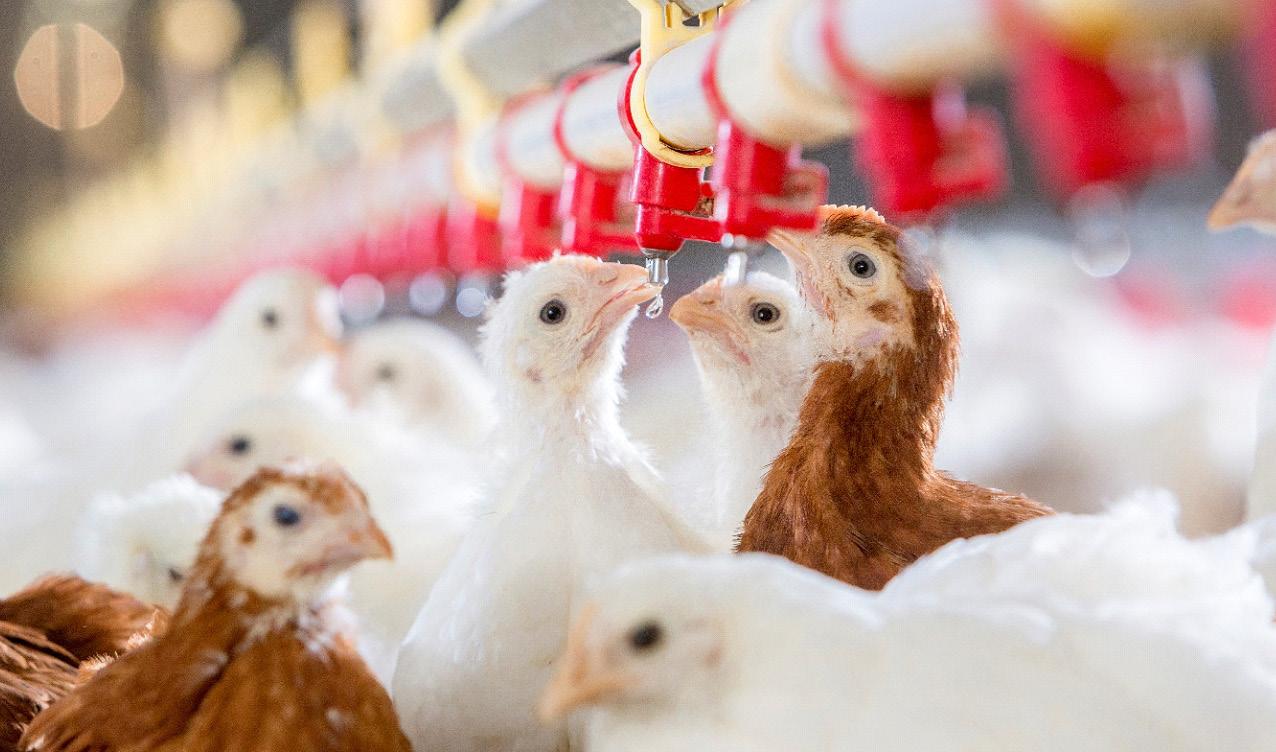
“ALWAYS CLEAN CAREFULLY YOUR WATER SYSTEMS BETWEEN FLOCKS, BUT BE CAUTIOUS WHEN LEAVING ORGANIC ACIDS IN MIXING TANKS AND THE DRINKING LINES. THESE ACIDS MAY RESULTS IN SLIME AND THEREFOR BIOFILM ISSUES. ALWAYS FLUSH THE DRINKING LINES PRIOR THE NEW FLOCK ENTERS THE BARN. IN THIS WAY YOU STILL HAVE TIME TO SOLVE ANY ISSUE WITH THE DRINKING LINES AND THE QUALITY OF THE DRINKING WATER
general municipality water has different origins, and therefore the water quality could fluctuate more. Borehole water sometimes needs some treatments to make it suitable for drinking. Surface water should never be used as a source for drinking water, because of the risk of contamination with bird pathogens. Wild waterfowl travel freely over the globe,
carrying diseases with them (i.e. avian influenza) and dropping large amounts of contaminated droppings on their resting places along their way.
The water system in the houses should be regularly cleaned and disinfected. It should always be disinfected in-between flocks and after water treatments. To keep the water system clean in longer production periods it is important to check the water system regularly. If needed it can also be cleaned during production. Make sure that the water systems are working properly after cleaning.
A good water treatment program needs to effectively treat water coming into the poultry houses, and keep it clean all the way up to the end of the drinking water supply in the poultry house. Your water treatment program should complement the water and make the quality consistent over time. Monitoring the water
quality before and after water treatment should be part of your program.
Sanitizing the water system during the rearing period can be a risky exercise. In general, a good cleaning of the system in the empty period should be sufficient for the whole 16 weeks rearing period and the rearing birds should get the chance to build up some immunity against normal environmental bacteria’s like E. coli. Semi-continuous use of water sanitizers can interfere with this.
Different products can be used for cleaning the system, both in-between flocks, when the houses are cleaned and disinfected, and during the production. These products can contain (combinations of) acetic acid and hydrogen peroxide, chlorine, organic acids and inorganic acids. Be careful of the percentages used when using these products in drinking water. Also be careful with the taste and with the acidity of the water. Using
acids, pH should be below 4, to achieve the disinfecting effect and above 3.5, otherwise it becomes corrosive and the birds stop drinking. High levels of chlorine have the same effect on the birds. To have an efficient disinfection with chlorine, decrease the PH. There must be no organic matter in the water, and a low iron and manganese concentration: if these conditions are not met, a proper water disinfection with chloride is not efficient. Using only organic acids as a water sanitizer for a longer period can be dangerous. You can see growth of yeasts and moult in the water. It is better to use acids and chlorine alternatively. However, always keep in mind the instructions and dosage of the supplier of the products.
In order to know the drinking water quality that is provided to your hens, you can analyse the water. A proper analysis starts with good sampling and storage conditions. In total 2 litres of water should be enough
Estimation of water quality
pH
Conductibility
Hardness
Visual check
Odor
pH meter or pH paper
Conductibility meter
Calcium sediments at the nipples, tap or in water cooker
Clarity, sediment, biofilm
Sulphur, faecal contamination, Taste salty
to do both a chemical and microbiological analysis. The frequency of checking should be at least once every 3 months. When checking water quality, it is important to check the water that your birds are receiving, as most contamination occurs via the drinking water system and not necessarily at the source. In the table below we give some simple indicators and tools to estimate the drinking water quality.
An easy checklist for water supply towards your birds
• Is the water according to the recommendations?
• Can the birds easily find and drink the water?
• For day-old chicks, is there enough light to find the water
from the start?
• Is the water fresh (e.g. has the system been flushed shortly before the delivery of the dayold chickens)?
• Is the height of the drinkers correct? (adjust it over time as the chicks will grow)
• Is the system of the drinkers used the same during the different phases of production (rearing versus lay)?
• Are bell drinkers used or nipple drinkers, what was used in rearing?
• What kind of nipples?
• Can the small birds easily activate the nipples?
• What is the nipple flow rate?
• Are there enough drinkers/ nipples per bird installed?
• What is the water pressure?
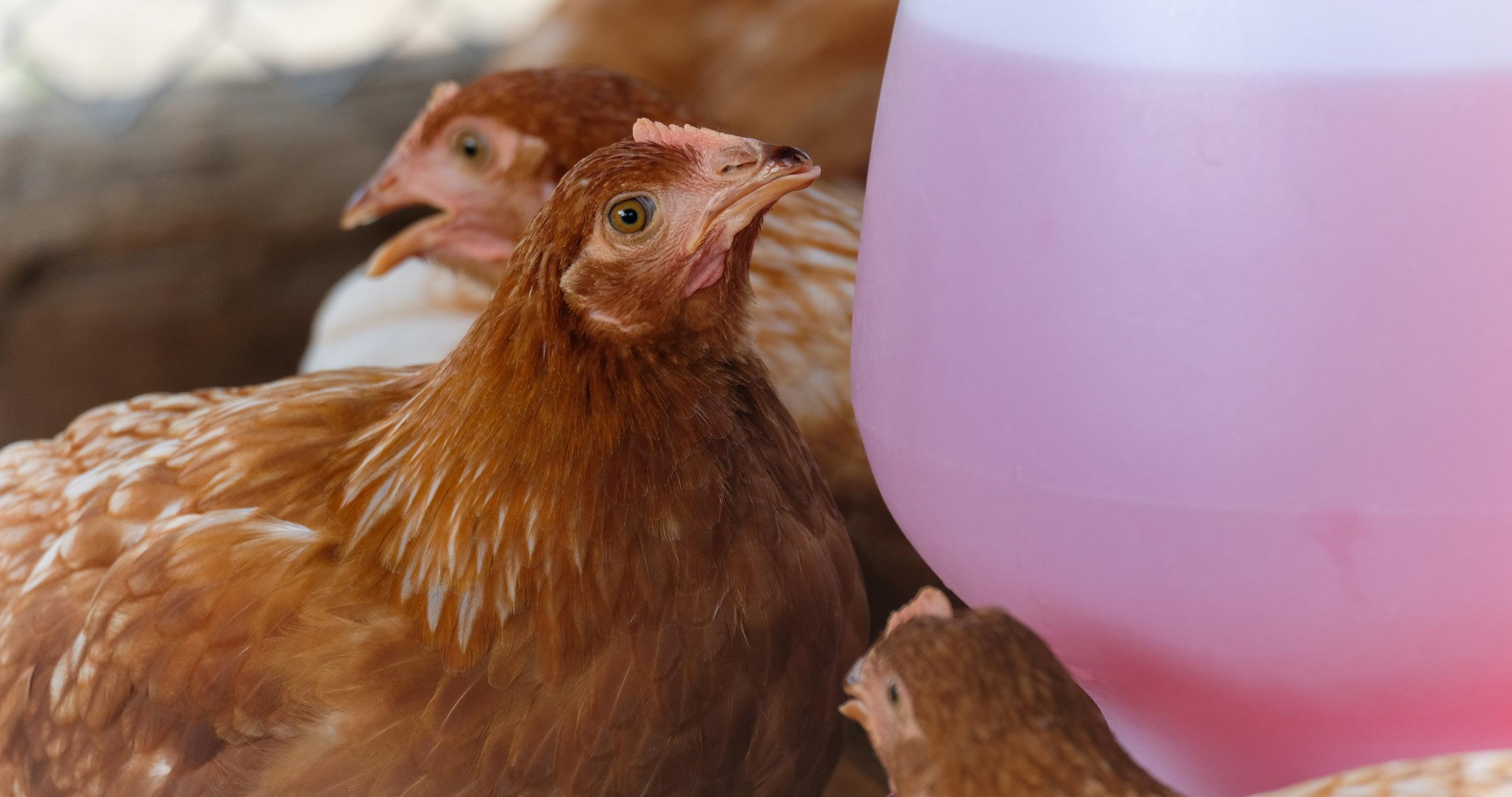

ur WINDO is a milestone in increasing the efficiency of the Animal husbandry and allows farmers by themselves Cleaning filters and low energy consumption a more sustainable operational management.
The air that flows from the large mast systems carries dust, Ammonia and bioaerosols with it, the respiratory diseases and pollute the environment. Our self-sufficient filter System WINDO enables efficient cleaning of the stable air, With a minimum energy consumption of less than 1 KW/h. Without carrying unpleasant odours to the outside. Due to the special filtering, pollutants and particles effectively removed from the air, which is not only health of the animals improved, but also for a more pleasant working environment for the staff. 14,000 m³ stable air are used per device every hour with our patented Filter system washed.
Our devices can be set up flexibly and regardless of location. You will need a simple electricity connection and water. The water tank can be connected to a fixed connection or filled manually.
For more information, contact Christian Stein at cstein@air-life-hightech.de
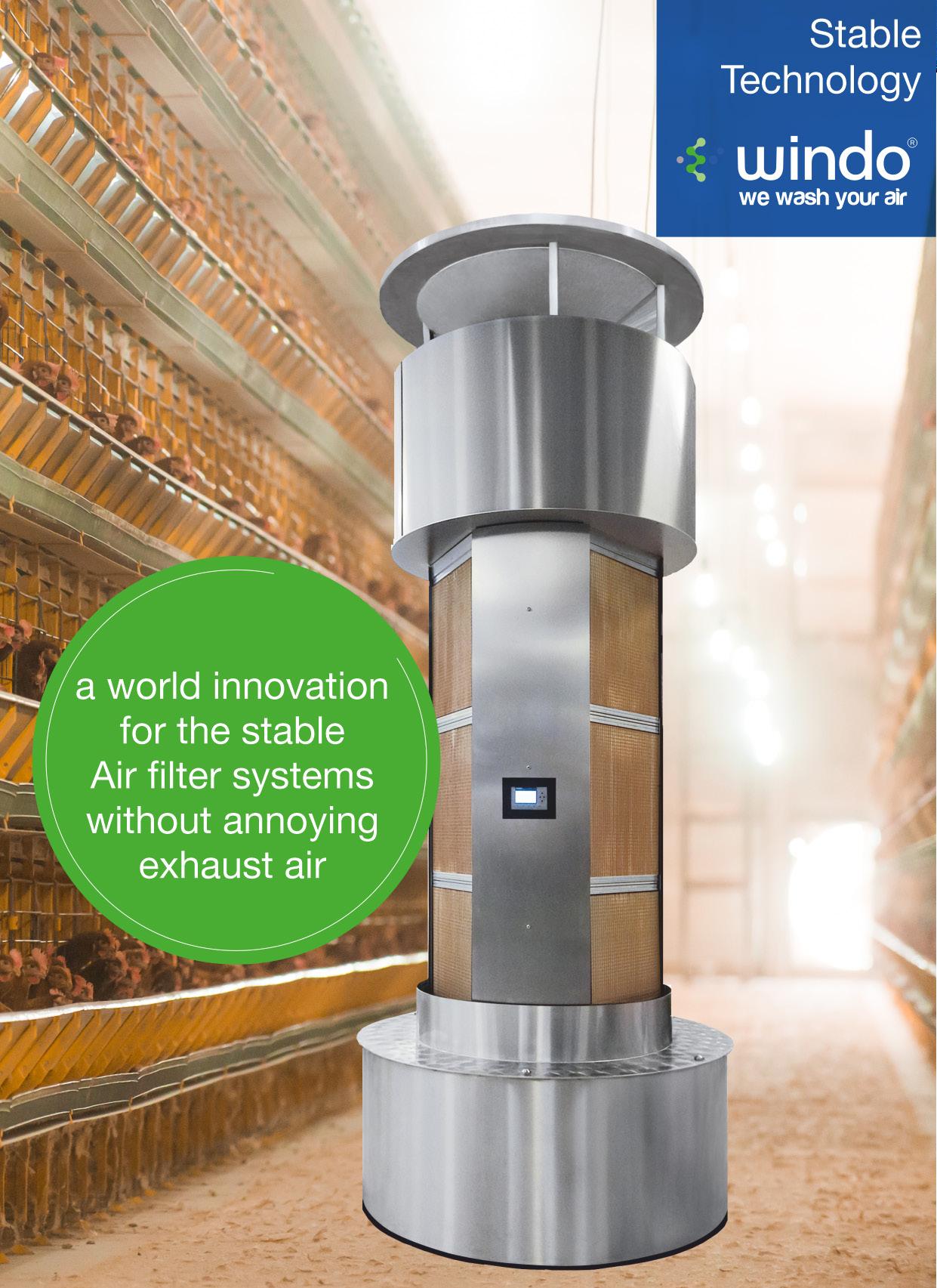

Agri Advanced Technologies (AAT), a leader in poultry breeding technologies, and part of the EW Group, is excited to introduce its Cheggy technology to the U.S. market. As the first advanced non-invasive in-ovo sex determination system available at the end of this year in America, Cheggy sets a new benchmark for speed, efficiency, and sustainability in animal welfare, providing a transformative solution for the poultry industry.
The U.S. poultry industry, particularly within the brown egg sector, is witnessing a growing consumer preference for organic and free-range eggs. Cheggy’s non-invasive and efficient technology aligns with this trend, offering a welfare solution of sexing embryos before hatch.
Jörg Hurlin, founder and CEO of AAT, expressed his excitement about the U.S. launch, stating, "The launch of Cheggy in two U.S. hatcheries marks a giant step forward for non-invasive in-ovo sex determination

technology. This is more than just a technical innovation—it's a transformative approach that aligns with the growing demand for welfare and sustainable practices in the poultry industry.”
Cheggy enables the determination of chick sex before hatching, using advanced hyperspectral imaging to accurately identify the sex of an embryo based on feather color. With the capability to process up to 25,000 eggs per hour, Cheggy is one of the fastest and most efficient solutions on the market, meeting the high demands of modern hatcheries while upholding the highest standards of animal welfare. This scalability makes Cheggy not only a technological innovation but also a practical solution for large-scale operations seeking to improve both efficiency and ethical standards.
Cheggy is already operational in seven hatcheries with 12 machines across Europe, including in countries such as France, Germany, and Italy. Cheggy’s introduction to the
U.S. market reflects AAT’s commitment to advancing the global poultry industry towards more sustainable and humane practices.
The main field of activity of Agri Advanced Technologies GmbH (AAT), Visbek, is the development of specialized application technologies for poultry breeding and husbandry. This includes, for example, machines for in ovo sexing, sorting and vaccination equipment for broiler breeding or technical solutions for feed and egg disinfection. As part of a global network, AAT works closely with all parties involved in the value chain as well as in research. AAT regularly cooperates with external institutions such as universities, research service providers as well as agricultural organizations, producers and commercial enterprises
For more information, visit www.agri-at.com

The importance of transition cow management is wellknown. But until recently, there have been unknowns about early disease indicators which impact the health of transition cows and heifers.
Activity monitoring systems like Alta COW WATCH have changed the game. The ability to track individual cow activity during the dry period and early lactation has given us a wealth of insights and data – data which has recently been used to identify potential red flags during the transition period for early intervention. Let’s explore some instances where activity monitoring data can be used as an indicator for transition cow success.
Launched in the Netherlands in 2016, the “Sense of Sensors in Transition Management Study” uses activity-monitor sensor data and regular veterinary checkups to develop early indicators and benchmarks for a successful transition cow period. The study recently uncovered a relationship
between eating time during transition and earlier first service, which could have an impact on your dry cow feeding strategy. Dry cows with longer eating time four weeks before calving were ready to be bred back sooner than cows who ate for less time. Cows with longer eating times three to four weeks after calving were also ready to be bred back sooner. Activity monitoring systems enable farmers to monitor individual cow and overall herd eating time. These systems send alerts when a cow’s eating time drops or when it’s lower than the herd average. The alert empowers the farmer to intervene, adjust the feed plan, call a veterinarian or pencil out a new dry cow feeding program. Early intervention can result in improved eating time and cows that breed back sooner.
Eating data from activity monitoring systems can also indicate a healthy lactation. Low eating time in transition
cows during the dry period can be an early indicator for lost body condition, low milk production, diseases and/or longer time to first insemination during lactation. Feed plan adjustments can be made based on eating time data and desired milk production. On one farm in the study, fresh heifer milk production was underperforming compared to older cows. Activity monitoring data showed cows spent 24% of the day eating, which is normal. Upon ruling out eating time as an issue, the farmer dug deeper and observed that older, more aggressive cows at the feedbunk were sorting the roughage. As a result, fresh heifers weren’t getting the right nutrients. Activity monitoring data showed immediate desirable changes after the farmer changed his feeding strategy to eliminate sorting. The changes included increased rumination time, increased lying time and less competition at the feedbunk. Younger cows received a better balance of nutrients to help maximize milk production. Average milk production for first-lactation cows increased by 4%. In this real-life example, activity monitoring data told the farmer fresh heifer eating time was normal. Normal eating time pointed to a potential feed nutrient issue, which he identified visually and was confirmed with sensor data. The data also enabled the farmer to monitor the immediate impact of the management change. This demonstrates how sensor data generates value when paired with farmer knowhow on feeding strategy, feed management and pen characteristics.
For more information, visit www.altagenetics.com

Shearwell Data is an animal identification and software management business. Being farmer owned, Shearwell understands farmers’ needs and challenges. The team are committed to supplying and developing products to support livestock farming businesses. The product range includes ear tags for sheep, goats and cattle,

electronic (EID) readers, software and handlings systems, all designed and built to withstand a hard day’s work out on farm.
In 2002 Shearwell developed the SET Tag. Available in 11 colours and multiple print options, SET Tags are renowned for their quality and efficiency and their covered pin, ensures excellent retention. These lightweight, one-piece ear tags are durable and easy to apply, ideal for the identification of sheep and goats. Now also available in drums to apply with the TurboTagger, five times faster than our single applicator!
Shearwell is the first company in the world to offer a metal EID tag for cattle. The MET Tag combines EID capabilities with stainless steel. The MET Tag has been designed around the very popular Ketchum metal tag, which is well-liked by livestock farmers
around the world due to its retention capabilities. The development of this revolutionary product is testament to the expertise within the Shearwell business.
Shearwell has been a pioneer in Electronic Identification, initially for management information and we could never have envisaged it being used as widely and extensively as it now is. It has been an enlightening journey, meeting many people along the way with a desire to use detailed knowledge and technology to help manage and improve their farming business. Shearwell celebrated its 30th Anniversary in 2022, quite an achievement for a family, farmer owned business whose mission has and continues to be “Working to help the livestock farmer”.
For more information, contact kirsty.howieson@shearwell.co.uk or call + 44 (0) 7415 108532
“FROM SMALL BEGINNINGS TO THE INTERNATIONAL SCALE OF BUSINESS WE NOW RUN, IT HAS BEEN AN EXCITING JOURNEY TO DATE.” RICHARD WEBBER, DIRECTOR
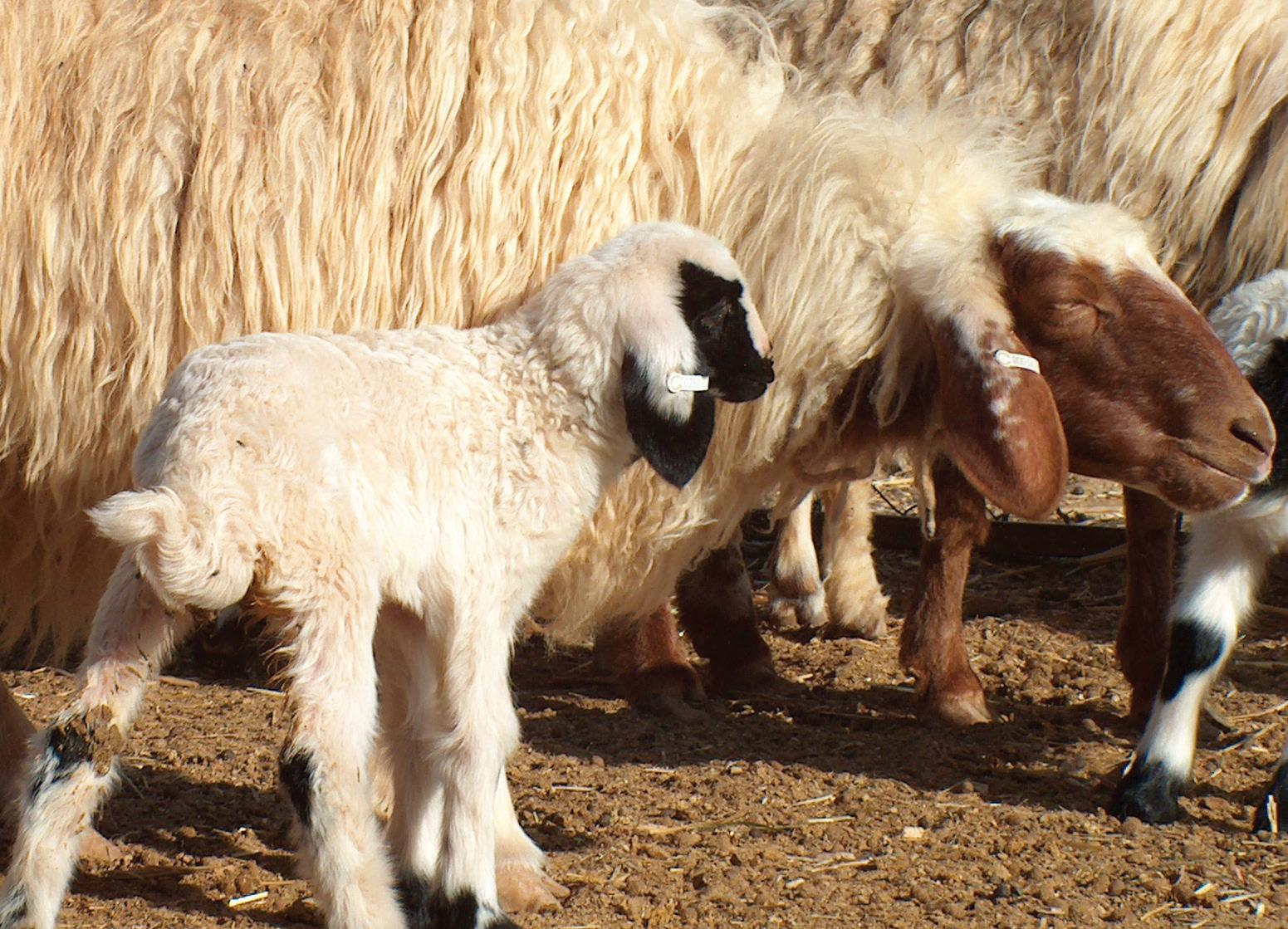
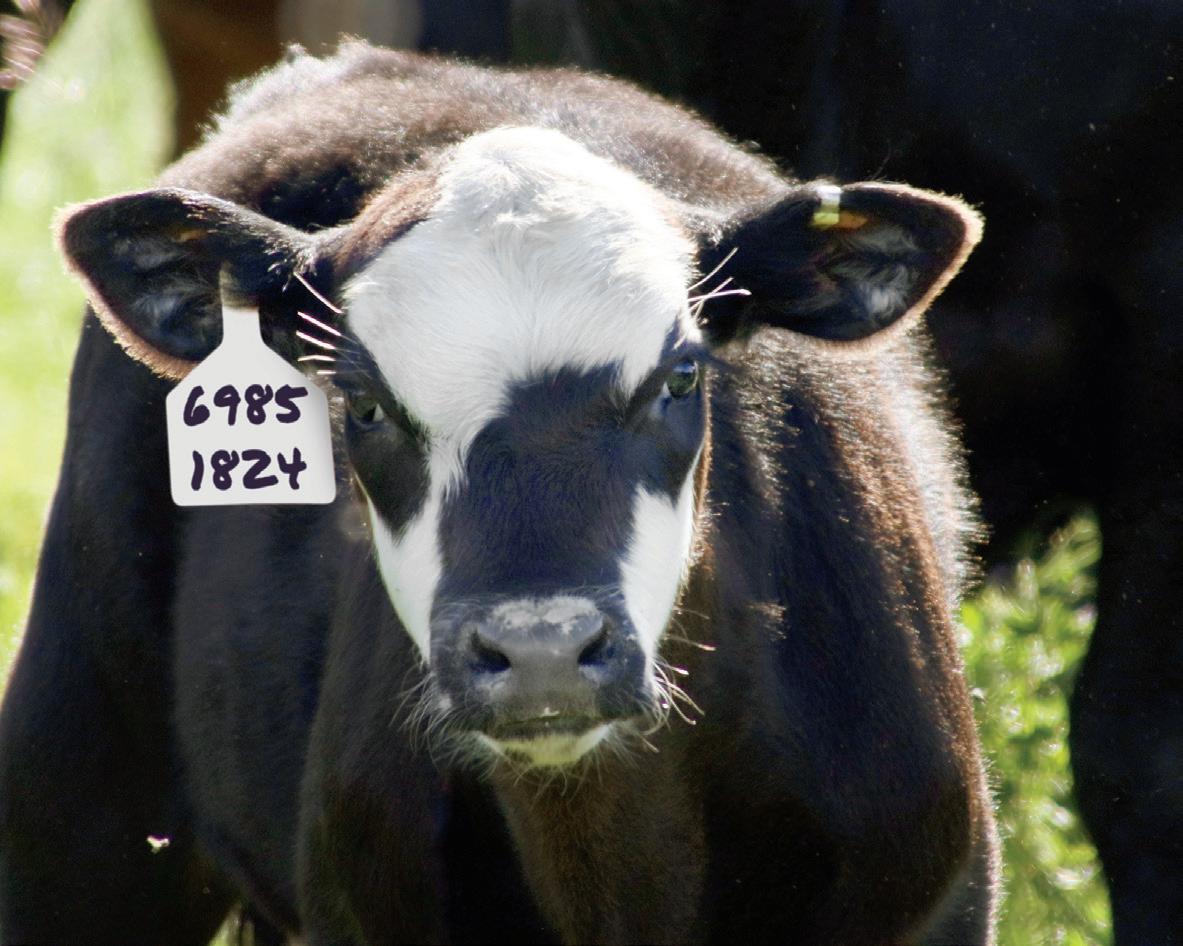
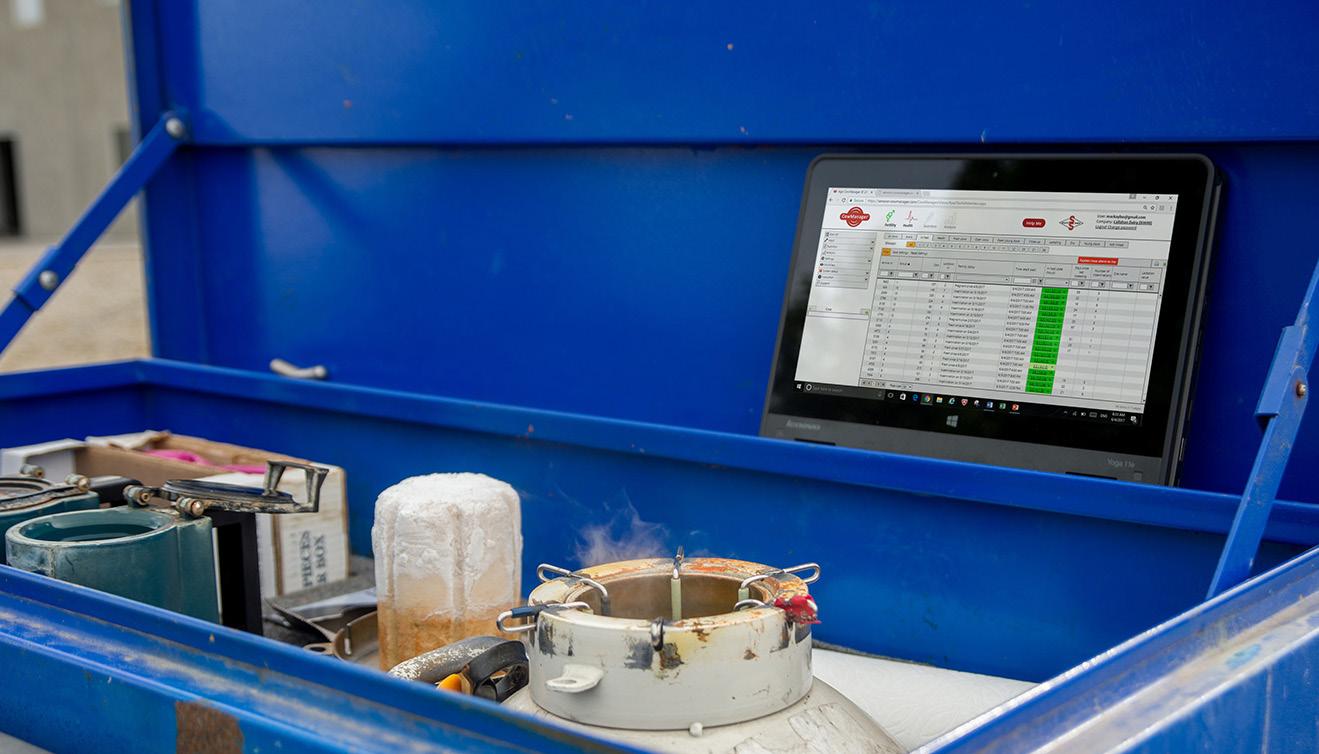
Insemination is a crucial time, as it sets the stage for the next generation of healthy and productive cows in your herd. Accurate cow heat detection is essential in getting the best results possible for your business. But spotting a cow in heat can be tricky and time-consuming, especially with bigger herds. CowManager’s ear sensor will do wonders for your pregnancy rates – and your workload.
Heat Detection System
With CowManager you’re likely to never miss a heat. When cows are tagged with the orange ear sensor, the system recognizes peak heats, pregnancies, non-cycling cows and potential abortions. It also helps you keep detailed records of all your cows’ cycles. This way, you and your staff can keep detailed records of everything leading up to, during, and after insemination. Record insemination dates, sire information, and any
fertility testing results.
The small orange ear sensor fits around an official animal identification RFID tag or blank tag and stays put thanks to an effective attachment mechanism. In a single action, you can place the sensor in a cow’s ear. It’s easy to remove and attach to another cow, too.
The data from the ear sensors is measured and collected 24/7 in real-time. Data is then transmitted from the sensors and collected by wireless routers, which can be placed anywhere inside or outside. All data is sent to the user’s pc and smartphone.
Detect more than just heats
Cow heat detection isn’t the only aspect CowManager excels in. It also gives dairy producers real-time information about their herd’s health, nutritional status, as well as how cows are doing during transition. Users will receive an alert to point out which cow needs attention and why. And of course, they can always check on a cow or a group, wherever and whenever. All the information they need is at their fingertips. And that kind of freedom and peace of mind is priceless.
For more information, visit www.cowmanager.com

Pre-weaning the overall aim was to have doubled our calves birth weight at the point of weaning, and to be ~ 100 kg at 11-12 weeks before being turned out to grass.
Another target weight to keep in mind with February and early born March calves is to weigh 180 – 190 kgs by the 1st of September, equating to an average daily gain of 0.7-0.8kg/ head/day.
In an ideal world calves would be weighed regularly over their first season at grass to track average daily gains. This will allow for informed decision making regarding decreasing concentrate feeding rates at grass. 2kg of a low protein (<16%), high fibre concentrate should be offered while grazing for the first 3-4 weeks of grazing and only considered to be reduced thereafter, to approx. 1 kg. Where early born (Late Jan/Feb born) calves are on target and adjusted to grazing well, supplementation can be reduced further or removed – but this should not happen until late June; supplementation will need to
be reintroduced when grass quality declines (late summer) and/or if targets are not being met.
Within groups, there will always be outliers that should be prioritized, calves failing to achieve the above outlined weights (especially younger born March calves). This lighter group needs to be offered a higher rate of supplementation, supplemented for later into the summer and prioritised for grass availability.
Replacement heifers struggling to achieve target weights in the first season at grass, typically results in a heifer too light at housing, and if not fed appropriately and returned to grass early, results in a heifer too light at the point of bulling –negatively effecting her longevity within the herd as a mature cow. With calf-to-beef situations a poor first season at grass will result in prolonged days to slaughter at a significant cost.
Stomach worms and lungworms (hoose) are the most common parasites of calves at grass – with burdens typically building during May-July (weather dependant).
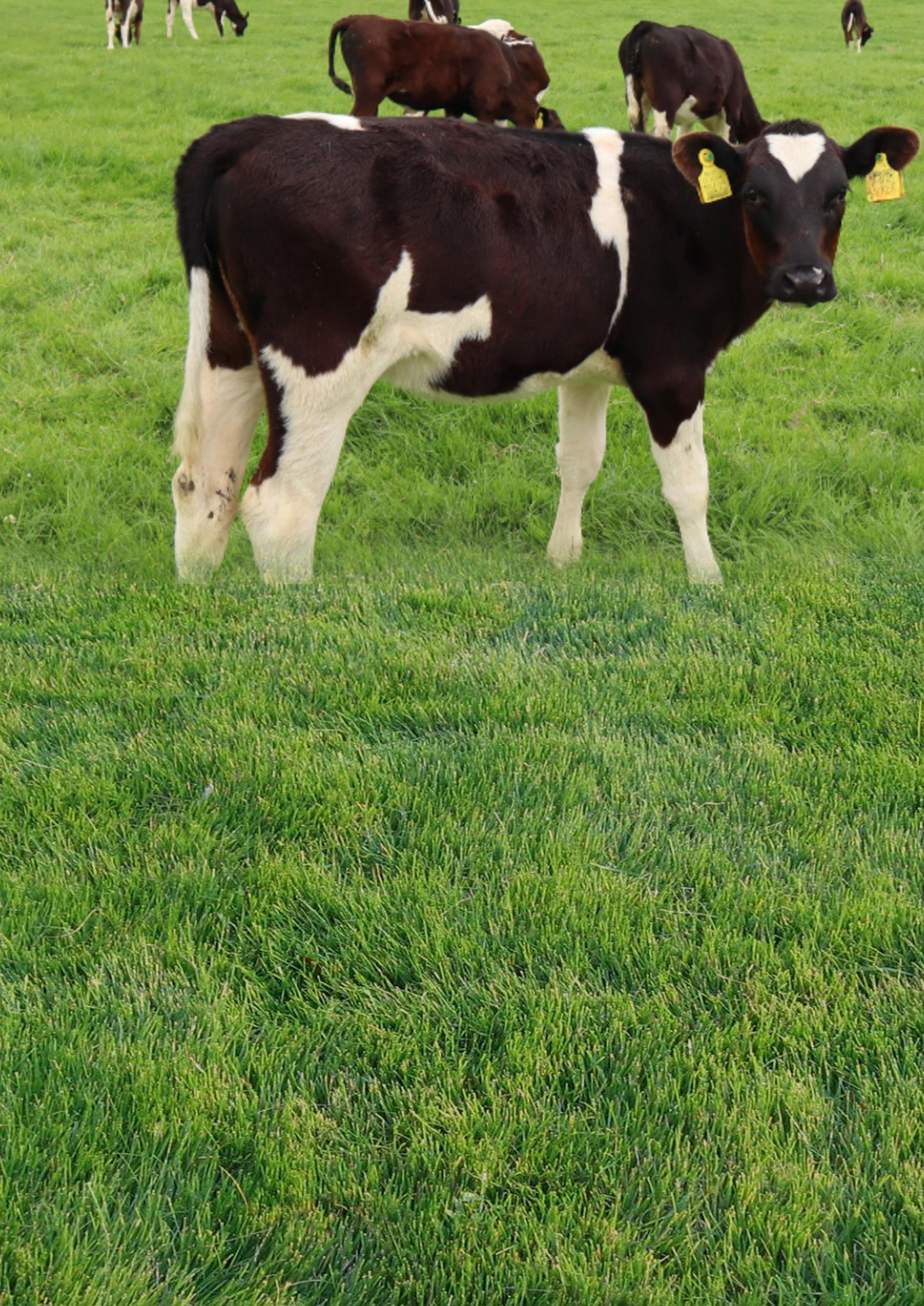
Although burdens may be building, clinical signs/symptoms are not experienced or seen typically until mid-summer onwards and this is when action will be required.
Warm humid conditions followed by heavy rainfall can result in rapid multiplication and a close eye will need to be kept on youngstock at grass over the next number of weeks. A dosing protocol should be discussed on a herd-by-herd basis with your veterinary practitioner, as conditions/grazing management & resistance in herds will vary hugely. Dung sampling is also advised to pinpoint issues. Stomach worms will typically present as scouring, and poor thrive while lungworm will need to be dealt with where husky coughing occurs (especially when being moved). Where poor thrive and loose dung is an issue, dung sampling to rule out coccidiosis is also required. It is important that poor thrive caused by parasites is not to be wrongly self- diagnosed as summer scour syndrome.
For more information, visit www.agritech.ie
Criticism of the use of Soya Bean Meal (SBM) in poultry diets remains high from retailers due to the negative public perception, sustainability implication and deforestation associations. Protein remains a key nutrient within UK poultry diets; amino acids are the essential protein building blocks for growth and support of bodily functions which are primarily sought from SBM.
SBM is protein rich with typically 46% crude protein (CP), highly digestible amino acids and relatively low antinutritional factors (ANF) in comparison to other protein sources. Poultry have a unique profile of amino acid requirements, which very closely follows the same profile as SBM when combined with single methionine. Whilst theoretically possible, there are still many hurdles that need to be overcome regarding alternative protein sources and important factors that need to be considered when selecting these raw materials. In reducing the reliance on SBM, raw material selection should be done with careful consideration of some of these factors prior to
implementation.
An important aspect of formulating poultry diets is maximising nutrient bioavailability and precisely formulating to the birds’ requirements which vary depending on life stage. Formulating to digestible amino
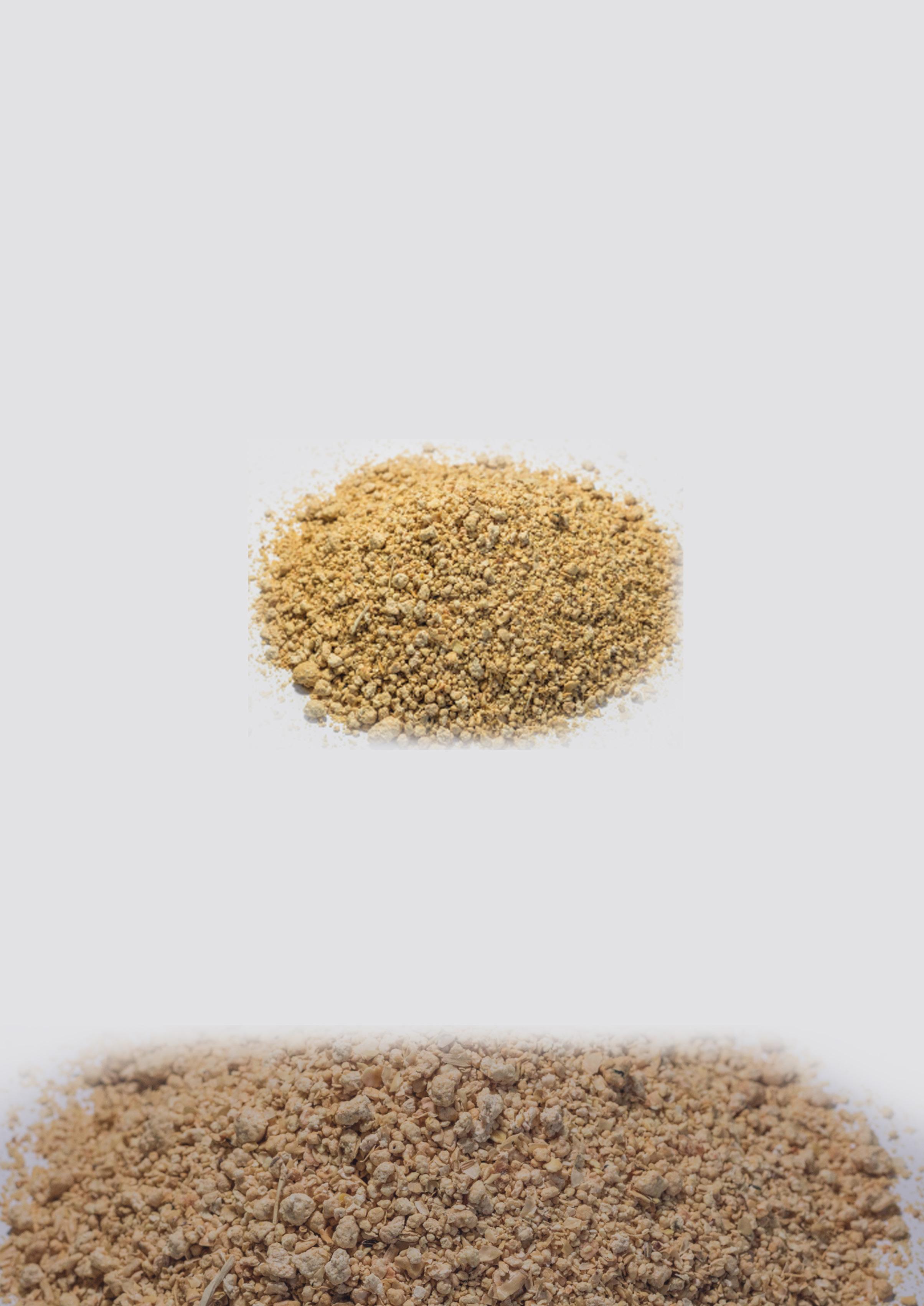
acid levels is key in maintaining the precise amino acid balance and not delivering excess crude protein. Excess crude protein can lead to higher nitrogen excretion and cause gut health challenges. This undigested protein can cause proliferation of harmful bacteria in the gut, which can challenge bird health and performance.
Once the amino acid profile is understood, the use of alternative protein sources can be balanced by single amino
acids. Out of the 20 L-amino acids that can be synthesised from protein, poultry are unable to synthesis 9. These are called essential amino acids. Not all these essential amino acids are commercially available in the single form and the required balance will need to come from the raw materials in the diet.
Once an ingredient has been evaluated to be beneficial and meet the nutritional specifications to fit into a diet, other factors need to be considered; commercial availability, processing requirements and the cost of production. Commercial availability of alternative protein sources have difficulty competing with soya, given the good supply and processing facilities of soya into the UK. Without further processing, the presence of ANF’s in many commodities will limit the inclusion in diets. For instance, the ANF’s present in soya are reduced via heat treatment during the oil extraction process. Hence, it is not only crop availability but also infrastructure requirement to enable access to sufficient tonnage in the market.
For more information, visit www.premiernutrition.co.uk

There is a growing interest for citrus extracts in the field of animal nutrition, thanks to their ability to modulate animals’ microbiota, and thus improve feed efficacy. However, the effect

of citrus extracts supplementation through the feed can differ a lot, depending on the citrus based product used. Indeed, common citrus extracts used in animal nutrition are not standardized, which can lead to high heterogeneity regarding their effects on animal performance.
Nor-Feed has conducted a trial to assess the effect of a standardized and characterized citrus extract, Nor-Spice AB®, on the growth performance of broiler chickens. This trial was conducted on 620 broiler chickens. Broiler chickens were equally divided into 2 groups. The Control group, composed of 10 replicates of each 31 broiler chickens, fed with a standard diet. The Citrus group, composed also of 10 replicates of 31 broiler
chickens each, fed a standard diet supplemented with 250 ppm of citrus extract. The citrus extract (Nor-Spice AB®) was finally characterized, with HPLC analysis, before being supplemented to the chickens. This analysis allowed to identify pectic oligosaccharides as the main active compounds of this extract, as well as 30 secondary metabolites (citroflavonoids and acids mainly). Zootechnical performances were measured at day 35.
At the end of the trial, the live weight of the broiler chickens from the Citrus group was significantly higher compared to the chickens from the control group. However, no significant difference was observed on the feed consumption. Results from this trial showed that this standardized and characterized citrus extract (Nor-Spice AB®) enabled to improve growth performance of the broiler chickens. Also, the fine characterization of the extract confirms the standardization of Nor-Spice AB® The identified compounds enable to target new hypotheses regarding the mode of action of Nor-Spice AB®.
For more information, visit www.norfeed.net
One of the biggest challenges for livestock and poultry production is the ever-increasing cost of feed, which accounts for about 70 per cent of total production costs.
Increasing meat production requires the need to expand agricultural areas and increase feed and water consumption. Reducing arable land, global climate change and the shortage of fresh water resources make it difficult to meet the growing demand for protein. In this context, it makes sense to look for alternative, sustainable sources of protein that can contribute to global food security. Insect farming could be a
practical, cost-effective and sustainable approach for the production of high-value protein. It could have a smaller environmental footprint than traditional agriculture, with reduced land and water use, waste and pollutant emissions. Insect proteins may offer health benefits to farmed animals, potentially improving their immunity and reducing the need for antibiotics. This is particularly important in the context of growing concerns about antibiotic resistance and the desire for sustainable and healthier husbandry practices. Furthermore, insects can contribute to waste management
by consuming organic waste materials. One example is the larvae of the black soldier fly, an insect that is particularly efficient at converting organic waste into protein-rich biomass.
Overall, insect farming represents a promising and innovative approach to addressing the economic and environmental challenges of the livestock and poultry industry. As the industry explores and adopts sustainable practices, this alternative could play a significant role in creating a more resilient and environmentally friendly food production system.
For more information, visit www.giordanoglobal.com


Newcastle disease (ND) is a contagious viral disease affecting commercial poultry worldwide, resulting in performance problems and significant economic losses due to

regular outbreaks, decreased egg production and high mortality.
Genotype VII velogenic Newcastle disease virus (NDV) strains, which have been frequently reported across the globe since the 1990s, are the predominant concern in Asian countries. They are also prevalent in the Middle East, and North and South Africa.
Ensuring protection against a broad range of ND virus types is important. In unvaccinated birds, Genotype VII can cause high morbidity and mortality, reaching 100% in commercial broilers, layers and breeders, said CK Mah, DVM, global commercial development livestock lead for Asia, Zoetis.
“NDV Genotype VII is often further divided into subgenotypes, some of which are extremely velogenic (aggressive and dangerous),” Mah said. “The symptoms and lesions induced by NDV vary, but without timely and appropriate interventions, significant losses are inevitable.”
“The introduction of recombinant vector vaccines with a herpesvirus of turkeys (HVT) carrier made them valuable tools to veterinarians and production managers to address this evolving threat because
they have proven to be effective at inducing a robust immune response,” said Sing Rong, PhD, senior research director, Zoetis.
“Several key factors are involved in the development of a good recombinant vector vaccine, including where the F protein will be inserted into the HVT genome,” Rong said. “Where you insert not only impacts the stability of the viruses, it impacts the efficacy so the insertion site is important.”
Other important factors include selection of the best expression cassette that includes the F protein antigen sequence, the promoter — which goes in front of the sequence to drive expression of the antigen — and a poly A DNA sequence at the end of the cassette.
“You want a strong promoter to have good antigen expression, but you don’t want it too strong,” Rong said. “If it is too strong, that can lead to instability, so different promoters have to be tried to find the best one.”
Vector vaccines do not interfere with maternal antibodies, and in the case with Poulvac® Procerta® HVT-ND, onset of immunity is seen at 19 days of age.
For more information, visit www.PoulvacProcerta.com

In recent years, we have seen the livestock industry significantly shift towards sustainable and efficient farming practices. Among the many innovations driving this transformation, prefabricated modern agro closed houses have emerged as a game-changer. As a leading manufacturer of prefabricated modern agro houses, we are proud to uphold our slogan, 'Engineering Your Quality Livestock,' and to contribute to the growing trend that is shaping the future of livestock production.
Traditional livestock farming has long relied on open house or basic shelter structures. However, as the demand for more efficient, sustainable, and welfareoriented farming practices increases, the limitations of these conventional methods have become more apparent. We have urged to rethinking of how livestock are housed with better climate control, biosecurity,
animal welfare, and resource management. This is where our prefabricated modern agro closed houses system with good insulation come into play. These light weight structures offer a range of benefits that directly address the challenges faced by today’s livestock producers.
One of the most significant advantages of our prefabricated closed houses is the ability to provide precise climate control. Unlike traditional barns, which are often subject to external weather conditions, these closed houses are designed to maintain optimal temperatures, humidity levels, and ventilation. This controlled environment is crucial for the health and productivity of livestock, particularly in regions with extreme weather conditions. By creating a stable and comfortable environment, prefabricated agro houses help
reduce stress among animals, leading to better growth rates, improved reproductive performance, and overall enhanced animal welfare.
Biosecurity is a top priority in modern livestock farming, and prefabricated agro closed houses excel in this area. These structures are designed with biosecurity in mind,

incorporating features such as controlled access points, avoid air leakage, and easy-toclean surfaces. By limiting the entry of pathogens, controlling the internal environment and provide isolation, these houses significantly reduce the risk of disease transmission, ensuring healthier livestock.
Sustainability is a key consideration for the future of livestock farming. Prefabricated agro closed houses are engineered to be energyefficient, with advanced insulation materials and energysaving technologies that reduce the overall carbon footprint of livestock operations. The closed nature of these houses allows for better resource management, including water and feed, further contributing to sustainability. Additionally, the prefabrication process itself is more sustainable than traditional construction methods. Prefabricated components are manufactured in our factory, which reduces waste and allows for more efficient use of materials. The ability to quickly assemble these structures on-site also minimizes disruption to the
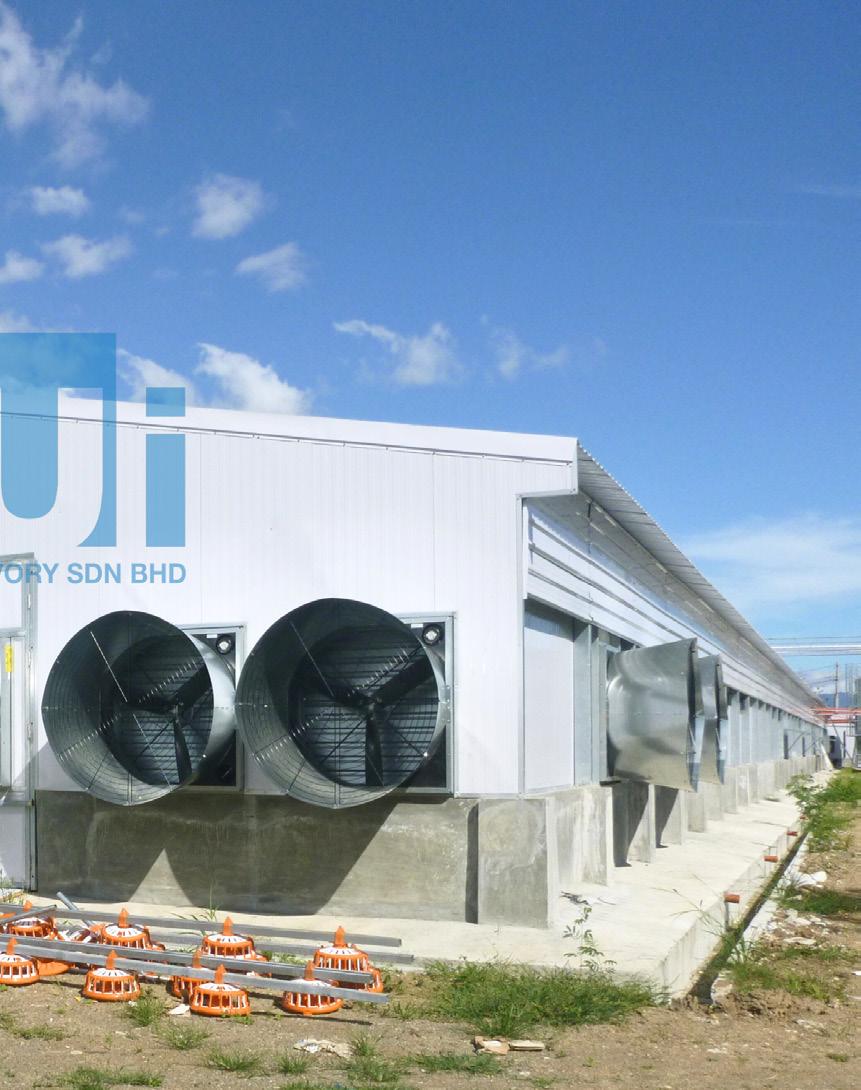
surrounding environment.
We customized these light weight structure to meet the specific needs of different types of livestock, whether it be poultry or swine. The modular nature of prefabrication also allows for easy expansion as a farm’s needs grow, making these houses a scalable solution for both small and large operations.
This level of customization ensures that each house is tailored to optimize animal welfare, productivity, and operational efficiency. Whether a farmer needs a specific layout for automated feeding systems or specialized ventilation for certain livestock, our prefabricated agro houses can be designed to meet those requirements.
Our customer target longterm cost savings which are substantial. The fast track construction timeline, energy efficiency, reduced disease incidence, and improved productivity of livestock housed in these structures lead to lower operating costs over time. Additionally, the durability and
low maintenance requirements of prefabricated houses ensure that they remain a cost-effective solution for years to come. Furthermore, the speed of construction and lower labour cost associated with prefabricated houses means that farmers can minimizing downtime and maximizing return on investment.
As the livestock industry continues to evolve, the adoption of prefabricated modern agro closed houses is set to increase. By embracing these innovative solutions, livestock producers can meet the demands of a rapidly changing industry while ensuring the long-term success of their operations.
At United Ivory, we are committed to providing the cost effective prefabricated agro closed houses that meet the diverse needs of livestock farming. Our expertise and experience in design and manufacturing ensures that our clients receive a solution that is not only functional but also future-proof.
For more information, visit www.unitedivory.com
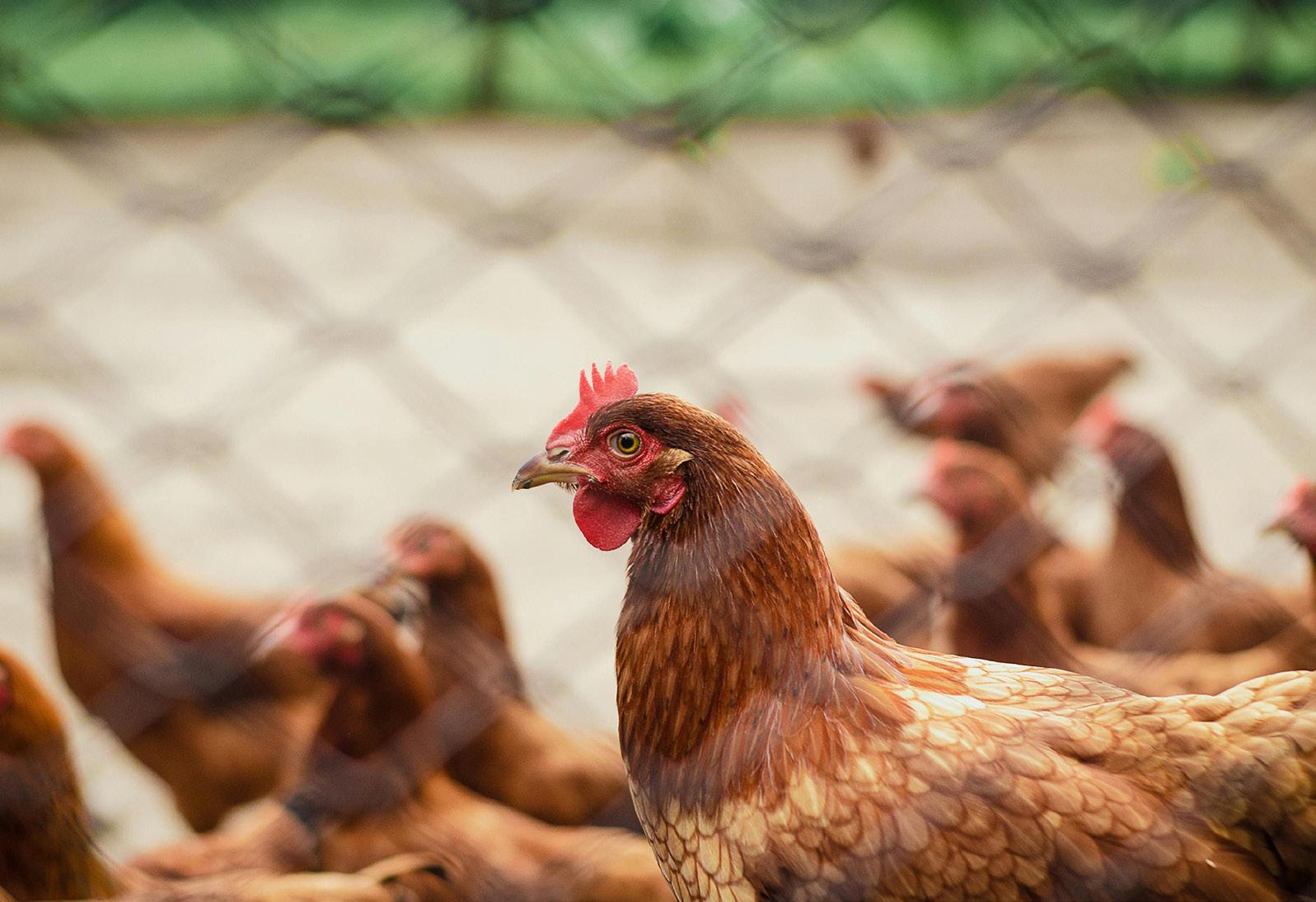
The importance of organic farming in livestock breeding extends far beyond the immediate benefits to animals and consumers. It represents a holistic approach to agriculture that prioritizes environmental sustainability, animal welfare, and human health. By adopting organic practices, farmers can create a more resilient and sustainable food system, ensuring the wellbeing of future generations
Article By: Mathews Mathew, Editor
In recent years, organic farming has become a critical focus in the agricultural industry, emphasizing sustainability, environmental responsibility, and animal welfare. This shift has been particularly
pronounced in livestock breeding, where the adoption of organic practices has shown significant benefits. The importance of organic farming in livestock breeding cannot be overstated, as it encompasses not only the health and well-being of the animals but also the broader impacts on the environment and human health.
At the core of organic livestock breeding is a commitment to superior animal welfare. Organic farming standards ensure that animals are raised in environments that allow them to express natural behaviors.
For instance, organic livestock must have access to outdoor spaces, which is a stark contrast to the confined conditions often seen in conventional farming. This freedom to roam reduces stress and promotes healthier, more active animals.
Furthermore, organic livestock farming prohibits the use of antibiotics and growth hormones. Instead, farmers rely on natural remedies and preventive care to maintain animal health.
This approach not only prevents the development of antibioticresistant bacteria but also ensures that the animals grow at a natural pace, which can lead to better overall health and longevity.
One of the most compelling reasons to adopt organic farming practices in livestock breeding is its positive impact on the environment.
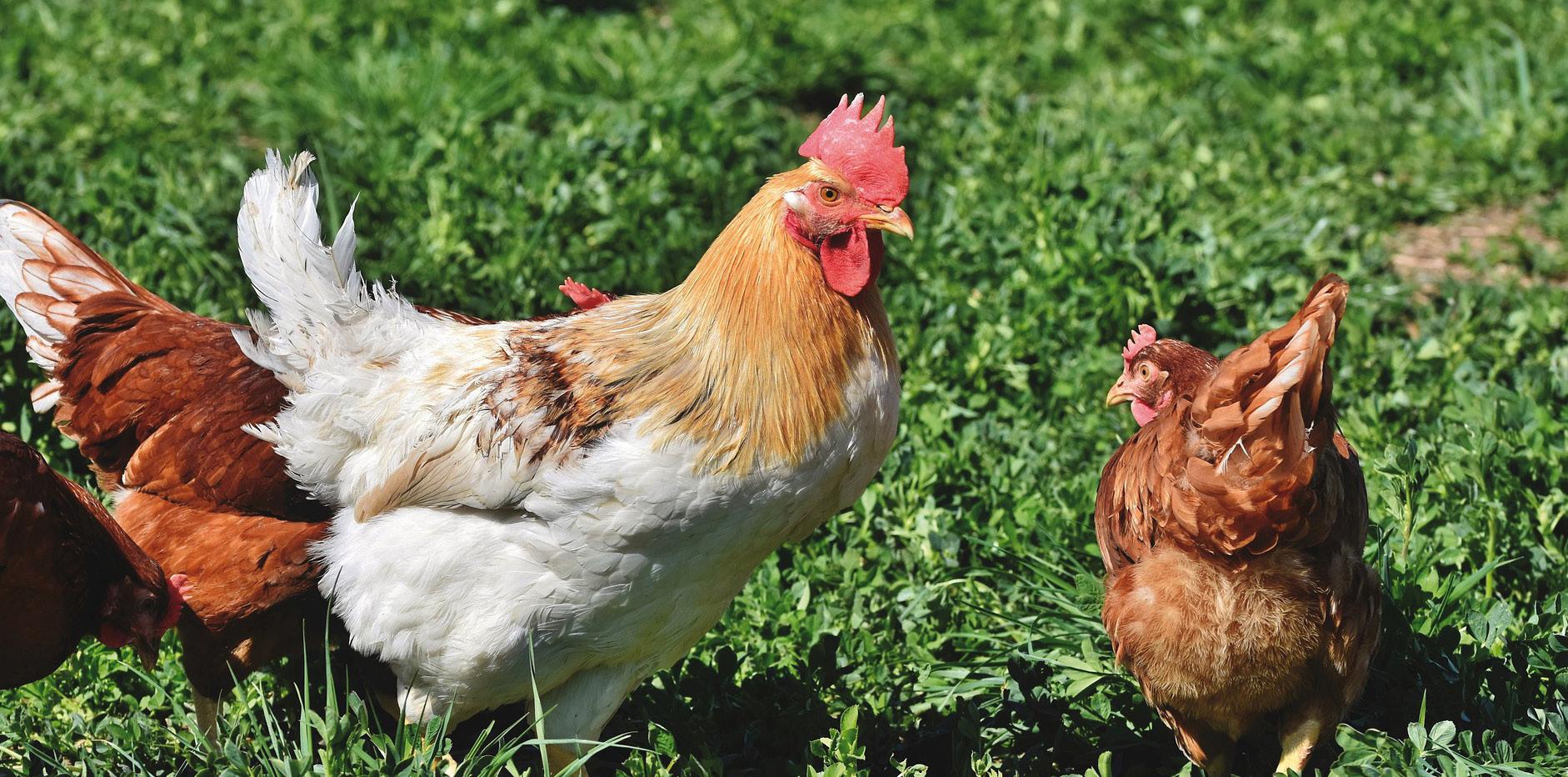
Conventional livestock farming is a significant contributor to environmental degradation, including soil erosion, water pollution, and greenhouse gas emissions.
Organic farming, on the other hand, employs practices that enhance soil health, conserve water, and reduce carbon footprints.
Organic livestock farming typically involves rotational grazing, where animals are moved between pastures. This practice helps maintain healthy grasslands, prevents overgrazing, and promotes biodiversity.
Healthy pastures can sequester carbon, mitigating climate change. Additionally, organic farms avoid synthetic fertilizers and pesticides, reducing the risk of water contamination and preserving the quality of local water resources.
Consumers are increasingly concerned about the quality and safety of their food, and organic livestock products address these concerns. Organic meat, dairy, and eggs are free from synthetic additives, hormones, and antibiotics, making them a healthier choice for many.
Studies have shown that organic products often contain higher levels of essential nutrients, such as omega-3 fatty acids, which are beneficial for heart health. Moreover, the absence of antibiotic residues in organic products reduces the risk of antibiotic resistance, a significant public health concern. By choosing organic, consumers are not only investing in their health but also supporting farming practices that prioritize the well-being of animals and the environment.


While transitioning to organic livestock farming can be challenging and initially costly, it can lead to economic benefits in the long run. Organic products often command higher prices in the market, providing farmers with better income opportunities.
This price premium reflects the added value of organic practices, including better animal welfare, environmental stewardship, and improved product quality.
Moreover, organic farming can reduce long-term costs associated with chemical inputs and veterinary care. Healthier animals are less likely to require medical intervention, and sustainable farming practices can enhance soil fertility, reducing the need for expensive fertilizers. Over time, these savings can offset
the initial investment in organic certification and infrastructure.
Biodiversity is a cornerstone of organic farming, benefiting both the farm ecosystem and the broader environment. Organic livestock farms often maintain diverse habitats, including woodlands, wetlands, and wildflower meadows, which support a wide range of plant and animal species. This biodiversity helps control pests naturally, reducing the need for chemical pesticides.
In addition, organic farming practices encourage the use of heritage breeds in livestock breeding. These breeds, often more resilient to local conditions and diseases, contribute to genetic diversity, which is crucial for the long-term sustainability of livestock populations.
DalterFood Group proudly brings Italian excellence and tradition to customers across the world as the only producer in Italy of this exceptional cheese. Crafted for the most demanding palates and resulting from a short, sustainable, and certified supply chain, this cheese reflects DalterFood Group’s deep commitment to animal welfare. The unique characteristics of this product stem from a single mountain dairy, a single livestock farm, and a single breed of cattle, making it particularly sought-after and appreciated globally.

For over 45 years, DalterFood Group has been bringing Italy’s finest dairy products to tables around the world.
The main cheese of the Group’s offering is one of the most well-known symbols
of Italian culinary tradition: Parmigiano Reggiano, which DalterFood Group produces in its own two mountain dairies. In addition to traditional Parmigiano Reggiano, the Group offers this iconic Italian product in different varieties, including the “Only from Italian Pezzata Rossa cows” version.
Crafted only in the mountain dairy Colline del Cigarello e Canossa, owned by the Group, this cheese embodies Italy’s tradition, while also reflecting the Group’s commitment to sustainability, animal welfare, and short supply chains. With prestigious certifications such as “Mountain Product” and “Organic Product”, it caters to demanding palates and consumers who value high-quality, traceable, and sustainably sourced food products.
The Pezzata Rossa cows, whose milk is integral to this cheese’s unique flavour and quality, have a long-standing tradition in Italy. This tie with the territory ensures that Parmigiano Reggiano “Only from Italian Pezzata Rossa cows”

not only offers exceptional taste but also a deep connection to Italy’s agricultural heritage.
The milk for this exceptional cheese comes exclusively from the “Le Boccede” farm, nestled in the mountainous region within the Parmigiano Reggiano production area. This farm, dedicated solely to breeding Pezzata Rossa Italian cows, is a key partner in DalterFood Group’s supply chain, sharing its values of sustainability and animal welfare. Equipped with photovoltaic and biogas plants, “Le Boccede” farm ensures self-sufficient energy production, respecting both the mountain ecosystem and the environment.
Furthermore, the farm has achieved animal welfare certification issued by Certiquality according to the Classyfarm protocol, scoring an impressive 86%, significantly above the national average of 78%. This highlights the farm’s superior practices and facilities dedicated to animal care and management.
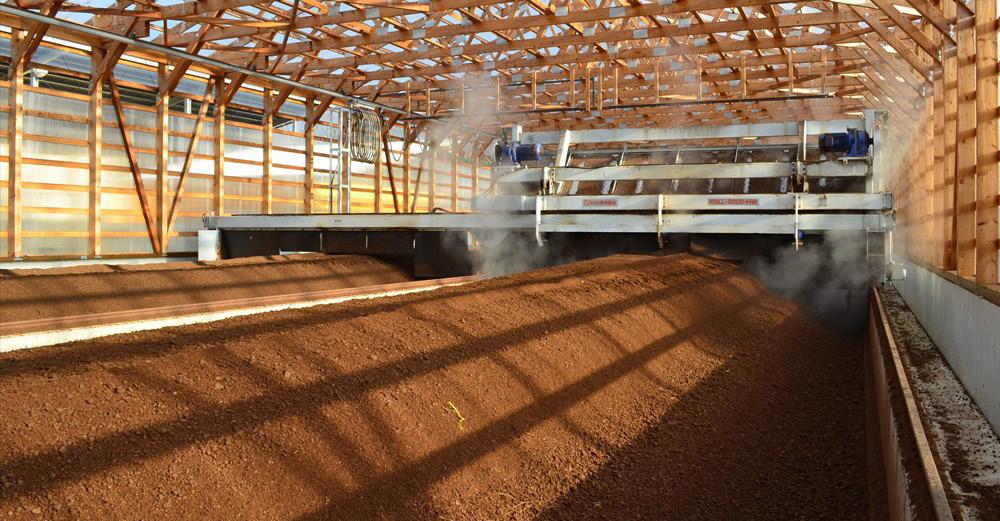

When it comes to countries with hot and dry climates, we, Kohshin Engineering, often observe the same issue: farmers prefer to dry organic waste or manure instead of composting it. Many believe that dried manure is a beneficial way to nourish their soil. However, experience shows that it has the opposite effect. Instead of enhancing soil health, it reduces crop yields and makes the soil less fertile. Why does this happen? Let's learn more
about the differences between composting and drying methods of manure treatment.
Dried manure can be harmful to plants because it has a high salt concentration and can lead to nitrogen leaching. When manure dries, moisture evaporates and leaves behind concentrated salts like sodium chloride and potassium chloride. Over time, this buildup of salts causes soil salinity to increase, which can deprive plant roots of water, causing them to dehydrate and become damaged. Additionally, these salts can interfere with the plant's ability to absorb other nutrients. Although dried manure contains beneficial nutrients initially, it can release nitrogen too quickly when applied to the soil, leading to nitrogen leaching and potential groundwater contamination.
In contrast, composting is a controlled process where microorganisms break down organic materials, including manure, into stable compost

rich in humus. This process stabilizes nitrogen, allowing plants to receive nutrients gradually, thereby minimizing environmental risks. Composting also enhances the water retention capacity of dry soils, making it especially beneficial in regions with low rainfall. This not only promotes healthy plant growth but also helps conserve water resources. In simple terms, dried manure can harm plants and degrade soil health. Additionally, when manure gets wet, it produces a bad odor that makes surrounding areas unpleasant. On the other hand, composted manure acts as a soil amendment that enhances soil health and fertility while producing a more natural smell when wet. To support farmers and promote a sustainable environment, we have designed specialized composting equipment that transforms bio-waste into premium, pathogen-free organic fertilizer. We believe that, together, we can make the world a better place by improving soil health and increasing productivity!
For more information, visit www.kohshin-s.jp
The intricate ecosystem of gut microbiota is a central element in the mechanism of health, disease, and productivity. While the scientific community has made significant progress in the knowledge of the microbiota of many animals, our understanding of fish microbiota is not as robust. Nevertheless, research has shed light on the critical role that the gut microbiota plays in the well-being, performance, and
biological functions of fish.
The unique microbial composition within an individual fish is shaped by a combination of selective pressures exerted by the host, diet, and environmental conditions. The relative contributions of the different factors influencing the microbiota are still unclear. Studies of fish diets and gut microbiota have
shown the gut microbiota is associated with different dietary patterns, feed, and nutrients. It has been noted that replacing fishmeal with plant-based protein results in a significant reduction in the diversity of the gut microbiota. The type of protein fed can also affect the microbiota. For instance, replacing plant proteins with poultry by-product meal results in increased protein degrading microbes in rainbow trout.
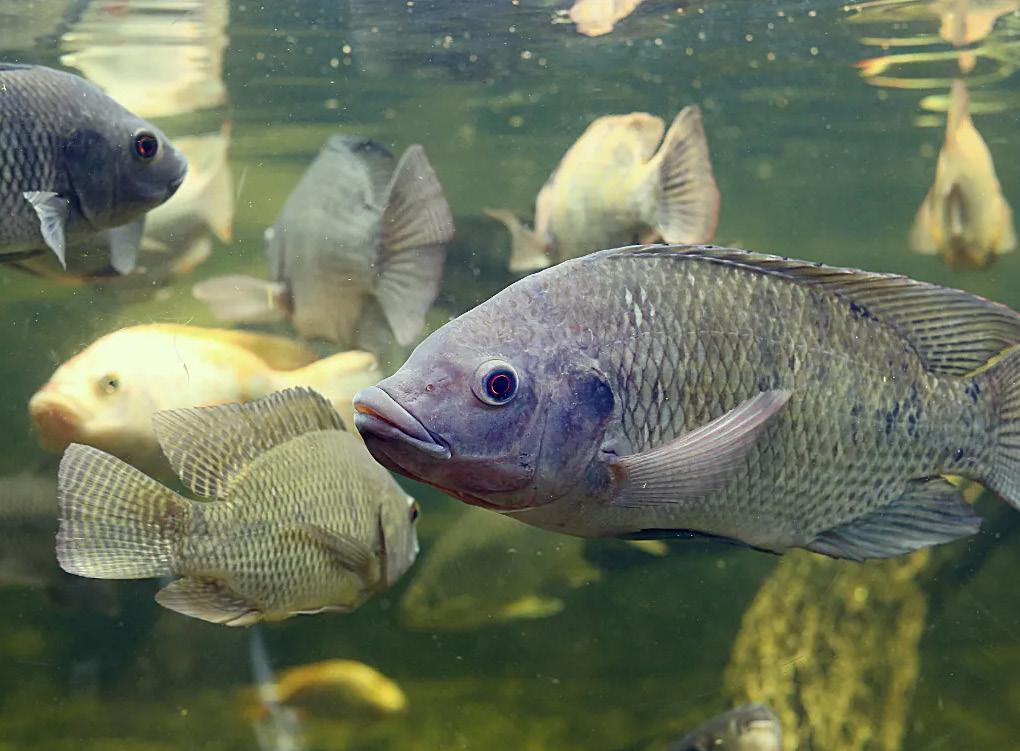
The effects of dietary lipids on the intestinal microbiota of fish have also been investigated. Vegetable oils with different fatty acid compositions had a significant effect on the abundance and diversity of gut microbes and fish fed with saturated fatty acids had greater gut microbial diversity. Furthermore, the abundance of Pseudomonas spp. was found to be elevated in fish fed a high saturated fatty acids diet, and fish oil supplementation limited the growth of Pseudomonas spp.
The environmental factors influencing wild fish microbial communities are mainly related to water quality and chemistry. Studies with Atlantic salmon transitioning from freshwater to seawater have shown that the change in salinity causes a dramatic change in the microbiota. This could also be a reason for the reduced feed intake and overall performance during this transition phase.
The influence of water temperature on the fish intestinal microbiota is an important question as well, as fish can face increased or decreased water temperature due to seasonal changes. It has been noted that cold stress reduced the diversity, and composition of the intestinal microbiota of blue tilapia. When the microbial response of coldresistant and cold-sensitive fish were compared, the microbiota of cold-resistant fish was more resilient to temperature changes. As such, water temperature acts as an influencing environmental factor.
In a fascinating display of biological interplay, commensal bacteria regulate many
key aspects of the host in a mutualistic relationship. The gut microbiota is considered an important factor in the regulation of nutrition and metabolism in fish and can regulate many key aspects of host functions involving feeding behavior, energy balance, nutrient metabolism, and immune response.
For example, gut microbes promote energy absorption by the host and regulate the expression of genes involved in energy and lipid metabolism. It is also proposed that the microbiota of herbivorous fish can convert dietary carbohydrates into short chain fatty acids, which play an important role in host nutrition and health.
Gut microbes are essential for maintaining the development and maturation of the immune system. Gut colonization in zebrafish was found to induce the expression of genes related to innate immune responses and to activate transcription factors like NF- κ B in tissues, supporting the role of the microbiota in immune regulation. Early colonization of the gut microbiota by certain bacterial species was required for normal neurobehavioral development in zebrafish.
In tilapia, the use of probiotics was found to activate gut microbial changes consistent with activation of the endocrine system, including increased expression of insulin-like growth factor genes. The insulin-like growth factor system is involved in the regulation of cell growth and differentiation, proliferation and survival, and is responsible for healthy growth in juveniles.
Microbial probiotics can
be sorted into two main categories—spore-forming and lactic acid producing bacteria. Each has its benefits. Spore-forming microbes are easier to handle and process when they are in their sporestage. Furthermore, some produce digestive enzymes to improve feed conversion and are especially known to inhibit gram-positive pathogenic bacteria.
Lactic acid bacteria are quick to become active in the gut compared to other probiotics. These bacteria are prolific producers of lactic acid, which improves the overall gut environment, and are known to reduce gram-negative pathogenic bacteria.
There is one species of bacteria that combines the best of both—Bacillus coagulans. This is currently the only known probiotic that is both sporeforming and produces large amounts of lactic acid. This means that this probiotic is easy to handle, but also provides gram-positive and gramnegative bacterial inhibition, digestive enzyme production, and overall improvement of the intestinal environment. Bacillus coaglans is known to have positive effects on the gut morphology across numerous species, of not only swine and poultry, but also of fish and shrimp.
Biochem’s unique strain of this exceptional probiotic, B. coagulans DSM32016, also known as TechnoSpore®, is the first B. coagulans registered in the EU for pig and poultry nutrition and remains the only one available for this use.
For more information, visit www.biochem.net

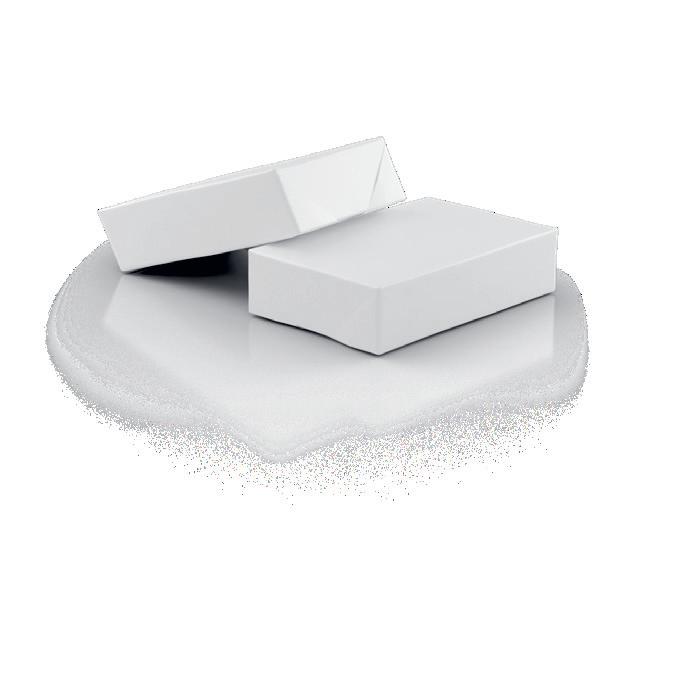




From Dosing and Wrapping to End of line, turnkey solutions for the entire manufacturing process.
IMA is a reference brand for the dosing, wrapping and packaging of cream, fresh or processed cheese, with a wide range of machines for triangular, rectangular or square portions, with hot fill solutions as well as cold fill systems. The complete and highly customised service also includes cartoning, boxing, banding and end-of-line solutions. Make the most, with us.
ima.it/foodanddairy - dairyfood@ima.it

